Bile acid analogs as FXR/TGR5 agonists and methods of use thereof
Or , et al.
U.S. patent number 10,266,560 [Application Number 14/934,122] was granted by the patent office on 2019-04-23 for bile acid analogs as fxr/tgr5 agonists and methods of use thereof. This patent grant is currently assigned to ENANTA PHARMACEUTICALS, INC.. The grantee listed for this patent is Enanta Pharmaceuticals, Inc.. Invention is credited to Yat Sun Or, Ruichao Shen, Guoqiang Wang, Xuechao Xing.
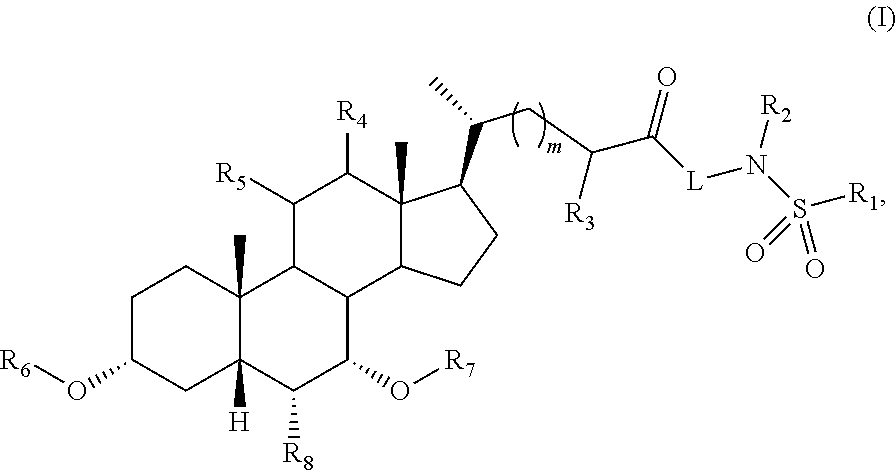

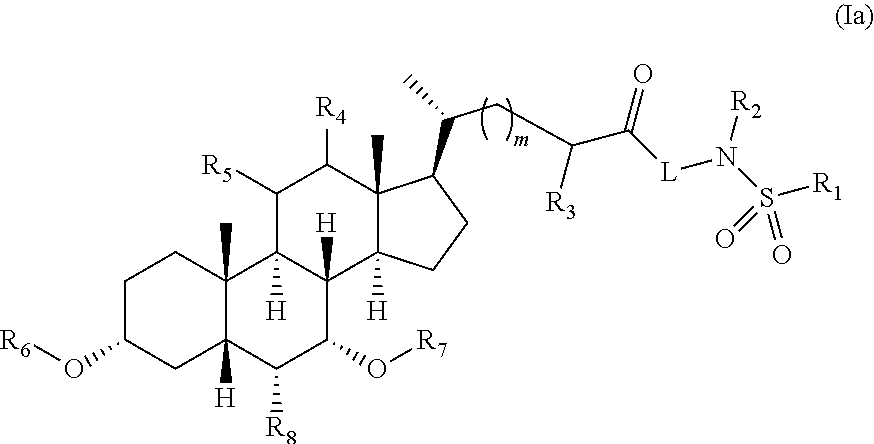









View All Diagrams
| United States Patent | 10,266,560 |
| Or , et al. | April 23, 2019 |
Bile acid analogs as FXR/TGR5 agonists and methods of use thereof
Abstract
The present invention relates to compounds of Formula (I), ##STR00001## and pharmaceutically acceptable salts thereof, where R.sub.1, R.sub.2, R.sub.3, R.sub.4, R.sub.5, R.sub.6, R.sub.7, R.sub.8 and m are as defined herein, pharmaceutical compositions comprising these compounds and methods of use of these compounds for treating a TGR5 mediated disease or condition.
| Inventors: | Or; Yat Sun (Watertown, MA), Wang; Guoqiang (Belmont, MA), Shen; Ruichao (West Roxbury, MA), Xing; Xuechao (Wilmington, MA) | ||||||||||
|---|---|---|---|---|---|---|---|---|---|---|---|
| Applicant: |
|
||||||||||
| Assignee: | ENANTA PHARMACEUTICALS, INC.
(Watertown, MA) |
||||||||||
| Family ID: | 55909823 | ||||||||||
| Appl. No.: | 14/934,122 | ||||||||||
| Filed: | November 5, 2015 |
Prior Publication Data
| Document Identifier | Publication Date | |
|---|---|---|
| US 20160130297 A1 | May 12, 2016 | |
Related U.S. Patent Documents
| Application Number | Filing Date | Patent Number | Issue Date | ||
|---|---|---|---|---|---|
| 62076323 | Nov 6, 2014 | ||||
| 62107725 | Jan 26, 2015 | ||||
| Current U.S. Class: | 1/1 |
| Current CPC Class: | C07J 41/0088 (20130101); A61P 3/06 (20180101); A61P 9/10 (20180101); C07J 41/0061 (20130101); A61P 3/10 (20180101); A61P 43/00 (20180101); A61P 13/12 (20180101); A61P 1/16 (20180101); A61P 3/00 (20180101); C07J 43/003 (20130101); A61P 1/00 (20180101); A61P 9/00 (20180101); A61P 3/04 (20180101) |
| Current International Class: | A61K 31/56 (20060101); A61K 31/58 (20060101); C07J 41/00 (20060101); C07J 43/00 (20060101) |
| Field of Search: | ;552/551,554 ;514/176,182 |
References Cited [Referenced By]
U.S. Patent Documents
| 4202876 | May 1980 | Monks et al. |
| 5466815 | November 1995 | Enhsen et al. |
| 5512558 | April 1996 | Enhsen et al. |
| 5646316 | July 1997 | Jacobson et al. |
| 5656277 | August 1997 | Berlati et al. |
| 2005/0054559 | March 2005 | Gallop et al. |
| 2007/0142340 | June 2007 | Pellicciari |
| 2008/0039435 | February 2008 | Pellicciari |
| 2008/0182832 | July 2008 | Pellicciari et al. |
| 2008/0214515 | September 2008 | Ferrari et al. |
| 2009/0062526 | March 2009 | Yu et al. |
| 2009/0163474 | June 2009 | Zhang et al. |
| 2010/0063018 | March 2010 | Pellicciari et al. |
| 2010/0324004 | December 2010 | McLane et al. |
| 2011/0172198 | July 2011 | Pellicciari |
| 2013/0116218 | May 2013 | Kaplan et al. |
| 2013/0345188 | December 2013 | Steiner et al. |
| 2014/0057886 | February 2014 | Pellicciari et al. |
| 2014/0186438 | July 2014 | Manku et al. |
| 2014/0187633 | July 2014 | Manku et al. |
| 2014/0206657 | July 2014 | Yu et al. |
| 2014/0371190 | December 2014 | Pellicciari et al. |
| 2015/0112089 | April 2015 | Finch et al. |
| 2016/0176917 | June 2016 | Wang et al. |
| 2016/0185815 | June 2016 | Wang et al. |
| 2016/0229886 | August 2016 | Shen et al. |
| 2016/0289262 | October 2016 | Wang et al. |
| 2017/0101434 | April 2017 | Pellicciari et al. |
| 2017/0240585 | August 2017 | Wang et al. |
| 2017/0240586 | August 2017 | Or et al. |
| 2017/0240587 | August 2017 | Or et al. |
| 2017/0260225 | September 2017 | Pellicciari et al. |
| 2018/0148469 | May 2018 | Wang et al. |
| 2018/0148470 | May 2018 | Li et al. |
| 2018/0237471 | August 2018 | Wang et al. |
| 2018/0291058 | October 2018 | Wang et al. |
| 105175473 | Feb 2015 | CN | |||
| 106478759 | Mar 2017 | CN | |||
| 106518946 | Mar 2017 | CN | |||
| 583566 | Feb 1994 | EP | |||
| 0624596 | Nov 1994 | EP | |||
| 1364645 | Nov 2003 | EP | |||
| 1947108 | Jul 2008 | EP | |||
| 3290429 | Mar 2018 | EP | |||
| H1160594 | Mar 1999 | JP | |||
| H11109628 | Apr 1999 | JP | |||
| 1987002367 | Apr 1987 | WO | |||
| 199526325 | Oct 1995 | WO | |||
| 0037077 | Jun 2000 | WO | |||
| 0228881 | Apr 2002 | WO | |||
| 2003030612 | Apr 2003 | WO | |||
| 2005089316 | Sep 2005 | WO | |||
| WO2007111994 | Oct 2007 | WO | |||
| 2008009407 | Jan 2008 | WO | |||
| 2008091540 | Jul 2008 | WO | |||
| 2010014836 | Feb 2010 | WO | |||
| 2013020108 | Feb 2013 | WO | |||
| 2013166176 | Nov 2013 | WO | |||
| 2013192097 | Dec 2013 | WO | |||
| 2014036379 | Mar 2014 | WO | |||
| 2014184271 | Nov 2014 | WO | |||
| 2015017813 | Feb 2015 | WO | |||
| 2015181275 | Dec 2015 | WO | |||
| 2016086134 | Jun 2016 | WO | |||
| 2016173493 | Nov 2016 | WO | |||
| 2016173524 | Nov 2016 | WO | |||
| 2017027396 | Feb 2017 | WO | |||
| 2017053826 | Mar 2017 | WO | |||
| 2017129125 | Aug 2017 | WO | |||
Other References
|
US. Appl. No. 14/952,526, filed Nov. 25, 2015. cited by applicant . U.S. Appl. No. 14/951,989, filed Nov. 25, 2015. cited by applicant . U.S. Appl. No. 14/976,294, filed Dec. 21, 2015. cited by applicant . U.S. Appl. No. 15/041,811, filed Feb. 11, 2016. cited by applicant . U.S. Appl. No. 14/951,736, filed Nov. 25, 2015. cited by applicant . U.S. Appl. No. 15/085,800, filed Mar. 30, 2016. cited by applicant . International Search Report for International Application No. PCT/US15/59308, dated Jan. 14, 2016. cited by applicant . Mosesin-4' at www.chemspider.com/ Chemical-Structure.10375019.html (retrieved from the internet Oct. 11, 2016). cited by applicant . Pellicciari, et al., "6.alpha.-Ethyl-Chenodeoxycholic Acid (6-ECDCA), a Potent and Selective FXR Agonist Endowed with Anticholestatic Activity," Journal of Medicinal Chemistry, 45(17):3569-3572, 2002. cited by applicant . Macchiarulo, et al., "Probing the Binding Site of Bile Acids in TGR5," Medicinal Chemistry Letters, 4(12):1158-1162, 2011. cited by applicant . Sato, et al., "Novel Potent and Selective Bile Acid Derivatives as TGR5 Agonists: Biological Screening, Structure-Activity Relationships, and Molecular Modeling Studies," J. Med. Chem., 51:1831-1841, 2008. cited by applicant . Silverman, "Prodrugs and Drug Delivery Systems," The Organic Chemistry of Drug Design and Drug Action, pp. 352-399, 1992. cited by applicant . Banker, et al., Modern Pharmaceutics, 3rd edition, 1996. cited by applicant . Bundgaard, "Design of Prodrugs: Bioreversible derivatives for various functional groups and chemical entities," Design of Prodrugs, Chapter 1, 1985. cited by applicant . Wolff, Burger's Medicinal Chemistry and Drug Discovery, 5(1):975-977, 1995. cited by applicant . Kim, et al., "Synthesis and Antimicrobial Activity of New 3.alpha.-Hydroxy-23,24-bisnorcholane Polyamine Carbamates," Bioorganic & Medicinal Chemistry Letters, 11:3065-3068, 2001. cited by applicant . Solaja, et al., "Novel 4-Aminoquinolines Active against Chloroquine-Resistant and Sensitive P. falciparum Strains that also Inhibit Botulinum Serotype A," J. Med. Chem., 51:4388-4391, 2008. cited by applicant . Willemen, et al., "Alkyl Derivatives of Cholic Acid as Organogelators: One-Component and Two-Component Gels," Langmuir, 18(19):7102-7106, 2002. cited by applicant . Pore, et al., "Design and synthesis of fluconazole/bile acid conjugate using click reaction", Tetrahedron, 62:11178-11186, 2006. cited by applicant . Nikolaienko, et al., "Rapid way to fluorescent cholic-based chemosensor precursors", Synthetic Organic Chemistry, pp. 1-4, 2011. cited by applicant . Sepe, et al., "Farnesoid X receptor modulators (2011-2014): a patent review," Expert Opinion on Therapeutic Patents, 25:8, 885-896, 2015. cited by applicant . Crawley, "Farnesoid X Receptor Modulators: a patent review," Expert Opinion on Therapeutic Patents, 20(8): 1047-1057, 2010. cited by applicant . U.S. Appl. No. 15/826,233, filed Nov. 29, 2017. cited by applicant . Briere, et al., "Novel small molecule agonist of TGR5 possesses anti-diabetic effects but causes gallbladder filling in mice." PLOS one, 10(8):1-17, 2015. cited by applicant . Okahata, et al., "Catalytic Hydrolysis of p-Nitrophenyl Esters in the Presence of Representative Ammonium Aggregates. Specific Activation of a Cholesteryl Nucleophile Bound to a Dialkylammonium Bilayer Membrane." Bulletin of hte Chemical Society of Japan, 52(12):3647-3653, 1979. cited by applicant . Sajisha, et al., "Remarkable isomer-selective gelation of aromatic solvents by a polymorph of a urea-linked bile acid amino acid conjugate," RSC Advances, 4(81):43167-43171, 2014. Abstract only. cited by applicant . Mayorquin-Torres, et al., "Application of palladium-catalyzed carboxyl anhydride-boronic acid cross coupling in the synthesis of novel bile acids analogs with modified side chains". Steroids, (101):21-27, 2015. cited by applicant . Ali, et al., "Recent advances in the development of farnesoid X receptor agonists," Ann Transl Med, 3(1):5, pp. 1-16, 2015. cited by applicant . PUBCHEM-CID-122592927, Created Date: Dec. 8, 2016. cited by applicant . PUBCHEM-CID-122592945, Created Date: Dec. 8, 2016. cited by applicant . Pellicciari, R., et al., "Bile Acid Derivatives as Ligands of the Farnesoid X Receptor. Synthesis, Evaluation, and Structure-Activity Relationship of a Series of Body and Side Chain Modified Analogues of Chenodeoxycholic Acid", Journal of Medicinal Chemistry, American Chemical Society, 47:4559-4569, 2004. cited by applicant . Okahata, Y., et al., "Base-catalyzed proton abstraction from .beta.-(p-nitrophenoxy)propiophenone in the presence of single-chain, double-chain, and triple-chain ammonium bilayer membrane aggregates", Database CA [Online] Chemical Abstracts Service, Database accession No. 1980:549272, abstract, 1980. cited by applicant . U.S. Appl. No. 15/896,400, filed Feb. 14, 2018. cited by applicant . Ballatore, et al., "Carboxylic Acid (Bio)Isosteres in Drug Design", ChemMedChem., vol. 8, No. 3, 2013, 385-395. cited by applicant . Coleman, et al., "Metabolic Fate and Hepatocyte Toxicity of Reverse Amide Analogs of Conjugated Ursodeoxycholate in the Rat", J. Steroid Biochem. Molec. Biol., vol. 64, No. 1/2, 1998, 91-101. cited by applicant . Fini, et al., "Basic Cholane Derivatives. XI: Comparison between Acid and Basic Derivatives", Journal of Pharmaceutical Sciences, vol. 81, No. 7, 1992, 726-730. cited by applicant . Fini, et al., "Quantitative Structure-Antimicrobial Activity Relationship in 5B-Cholanyl-24-benzylamine Derivatives", Journal of Pharmaceutical Sciences, vol. 79, No. 7, 1990, 603-605. cited by applicant . Gioiello, et al., "Extending SAR of bile acids as FXR ligands: discovery of 23-N-(carbocinnamyloxy)-3[alpha],7[alpha]dihydroxy- 6[alpha]-ethyl-24-nor-5[beta]-ch o I an-23-amine", Bioorganic & Medicinal Chemistry, vol. 19, No. 8, Apr. 15, 2011, 2650-2658. cited by applicant . Griffiths, et al., "Charge-remote fragmentation of bile acids derivatized with amino-sulphonic acids", Rapid Communications in Mass Spectrometry, vol. 7, No. 3, Mar. 1, 1993, 235-240. cited by applicant . Honorio, et al., "Hologram QSAR Studies on Farnesoid X Receptor Activators", Letters in Drug Design & Discovery, vol. 3, 2006, 261-267. cited by applicant . Okada, "Preparation of bile acid derivatives and their use as nasal absorption enhancers", Database CA [Online] Chemical Abstracts Service, Columbus, Ohio, US; retrieved from STN Database accession No. 1999:142390. cited by applicant . Opsenica, et al., "4-Amino-7-chloroquinolines: Probing Ligand Efficiency Provides Botulinum Neurotoxin Serotype A Light Chain Inhibitors with Significant Antiprotozoal Activity", J. Med. Chem., vol. 56, 2013, 5860-5871. cited by applicant . Pellicciari, et al., "Back Door Modulation of the Farnesoid X Receptor: Design, Synthesis and Biological Evaluation of a Series of Side Chain Modified Chenodeoxycholic Acid Derivatives", Journal of Medicinal Chem., American Chemical Society, vol. 49, Jun. 15, 2006, 4208-4215. cited by applicant. |
Primary Examiner: Badio; Barbara P
Attorney, Agent or Firm: Harlan; Edgar W. Elmore, Esq.; Carolyn S. Elmore Patent Law Group, P.C.
Parent Case Text
RELATED APPLICATIONS
This application claims the benefit of U.S. Provisional Application No. 62/076,323, filed on Nov. 6, 2014 and U.S. Provisional Application No. 62/107,725, filed on Jan. 26, 2015. The entire teachings of the above applications are incorporated herein by reference.
Claims
What is claimed is:
1. A compound represented by Formula I: ##STR00452## or a pharmaceutically acceptable salt, ester, solvate, or combination thereof, wherein: L is absent or --NR.sub.11CHR.sub.12C(O)--, wherein R.sub.11 and R.sub.12 are independently selected from R.sub.3; R.sub.1 is selected from the group consisting of: 1) Halogen; 2) Hydroxyl; 3) Substituted or unsubstituted --C.sub.1-C.sub.8 alkyl; 4) Substituted or unsubstituted --C.sub.2-C.sub.8 alkenyl; 5) Substituted or unsubstituted --C.sub.2-C.sub.8 alkynyl; 6) Substituted or unsubstituted --C.sub.3-C.sub.8 cycloalkyl; 7) Substituted or unsubstituted aryl; 8) Substituted or unsubstituted alkylaryl; 9) Substituted or unsubstituted heterocycloalkyl; 10) Substituted or unsubstituted heteroaryl; 11) Substituted or unsubstituted alkylheteroaryl; and 12) --NR.sub.9R.sub.10; wherein, R.sub.9 and R.sub.10 are independently selected from hydrogen,substituted or unsubstituted --C.sub.1-C.sub.8 alkyl, substituted or unsubstituted --C.sub.2-C.sub.8 alkenyl, Substituted or unsubstituted --C.sub.2-C.sub.8 alkynyl, substituted or unsubstituted --C.sub.3-C.sub.8 cycloalkyl, or R.sub.9 and R.sub.10 are taken together with the nitrogen they attached to form a heterocyclic ring; provided that when L is absent, R.sup.1 is not halogen or hydroxyl; R.sub.2 is hydrogen or substituted or unsubstituted --C.sub.1-C.sub.8 alkyl; R.sub.3 is independently selected from the group consisting of: 1) Hydrogen; 2) Substituted or unsubstituted --C.sub.1-C.sub.8 alkyl; 3) Substituted or unsubstituted --C.sub.2-C.sub.8 alkenyl; 4) Substituted or unsubstituted --C.sub.2-C.sub.8 alkynyl; 5) Substituted or unsubstituted alkylaryl; and 6) Substituted or unsubstituted aryl; m is selected from 0, 1, 2 and 3; R.sub.4 is hydrogen, hydroxyl, --OSO.sub.3H, --OSO.sub.3.sup.-, --OAc, --OPO.sub.3H.sub.2 or --OPO.sub.3.sup.2-, R.sub.5 is hydrogen, halogen, CN, N.sub.3, hydroxyl, --OSO.sub.3H, --OSO.sub.3.sup.-, --OAc, --OPO.sub.3H.sub.2, --OPO.sub.3.sup.2-, --SR.sub.2 or --NHR.sub.2; or R.sub.4 and R.sub.5 are taken together with the carbons they attached to form --CH.dbd.CH-- or cycloalkyl ring or heterocycloalkyl ring; R.sub.6 and R.sub.7 are each independently hydrogen or a hydroxyl protecting group; and R.sub.8 is ethyl.
2. The compound of claim 1, represented by Formula II-A or Formula II-B: ##STR00453## or a pharmaceutically acceptable salt, ester, solvate, or combination thereof, wherein, R.sub.1, R.sub.3, R.sub.4, R.sub.5, R.sub.8, R.sub.12 and m are as defined in claim 1.
3. The compound of claim 1, represented by Formula III-A or Formula III-B: ##STR00454## or a pharmaceutically acceptable salt, ester, solvate, or combination thereof, wherein, R.sub.1, R.sub.3, R.sub.4, R.sub.8 and m are as defined in claim 1.
4. The compound of claim 1, represented by one of formulas (III-1) to (III-18), ##STR00455## ##STR00456## ##STR00457## ##STR00458## or a pharmaceutically acceptable salt, ester, solvate or combination thereof, wherein R.sub.1, R.sub.8, and m are as defined in claim 1.
5. The compound of claim 1, represented by Formula IV-A or Formula IV-B: ##STR00459## or a pharmaceutically acceptable salt, ester, solvate, or combination thereof, wherein, R.sub.1, and m are as defined in claim 1.
6. The compound according to claim 1, which is selected from: (a) Compounds according to Formula IV-A wherein, R.sub.1 and m are delineated for each compound in Table 1: ##STR00460## TABLE-US-00014 TABLE 1 Compound m R.sub.1 1 0 Methyl 2 0 Ethyl 3 0 Isopropyl 4 0 Butyl 5 0 t-Butyl 6 0 Propyl 7 0 Benzyl 8 0 Vinyl 9 0 Allyl 10 0 CF.sub.3 11 0 ##STR00461## 12 0 ##STR00462## 13 0 ##STR00463## 14 0 ##STR00464## 15 0 ##STR00465## 16 0 ##STR00466## 17 0 NH.sub.2 18 0 ##STR00467## 19 0 ##STR00468## 20 0 ##STR00469## 21 0 ##STR00470## 22 0 ##STR00471## 23 0 ##STR00472## 24 0 ##STR00473## 26 1 Methyl 27 1 Ethyl 28 1 Isopropyl 29 1 Butyl 30 1 t-Butyl 31 1 Propyl 32 1 Benzyl 33 1 Vinyl 34 1 Allyl 35 1 CF.sub.3 36 1 ##STR00474## 37 1 ##STR00475## 38 1 ##STR00476## 39 1 ##STR00477## 40 1 ##STR00478## 41 1 ##STR00479## 42 1 NH.sub.2 43 1 ##STR00480## 44 1 ##STR00481## 45 1 ##STR00482## 46 1 ##STR00483## 47 1 ##STR00484## 48 1 ##STR00485## 49 1 ##STR00486## 51 2 Methyl 52 2 Ethyl 53 2 Isopropyl 54 2 Butyl 55 2 t-Butyl 56 2 Propyl 57 2 Benzyl 58 2 Vinyl 59 2 Allyl 60 2 CF.sub.3 61 2 ##STR00487## 62 2 ##STR00488## 63 2 ##STR00489## 64 2 ##STR00490## 65 2 ##STR00491## 66 2 ##STR00492## 67 2 NH.sub.2 68 2 ##STR00493## 69 2 ##STR00494## 70 2 ##STR00495## 71 2 ##STR00496## 72 2 ##STR00497## 73 2 ##STR00498## 74 2 ##STR00499##
(b) Compounds according to Formula IV-B wherein, R.sub.1 and m are delineated for each compound in Table 2: ##STR00500## TABLE-US-00015 TABLE 2 Compound m R.sub.1 76 0 Methyl 77 0 Ethyl 78 0 Isopropyl 79 0 Butyl 80 0 t-Butyl 81 0 Propyl 82 0 Benzyl 83 0 Vinyl 84 0 Allyl 85 0 CF.sub.3 86 0 ##STR00501## 87 0 ##STR00502## 88 0 ##STR00503## 89 0 ##STR00504## 90 0 ##STR00505## 91 0 ##STR00506## 92 0 NH.sub.2 93 0 ##STR00507## 94 0 ##STR00508## 95 0 ##STR00509## 96 0 ##STR00510## 97 0 ##STR00511## 98 0 ##STR00512## 99 0 ##STR00513## 100 0 F 101 1 Methyl 102 1 Ethyl 103 1 Isopropyl 104 1 Butyl 105 1 t-Butyl 106 1 Propyl 107 1 Benzyl 108 1 Vinyl 109 1 Allyl 110 1 CF.sub.3 111 1 ##STR00514## 112 1 ##STR00515## 113 1 ##STR00516## 114 1 ##STR00517## 115 1 ##STR00518## 116 1 ##STR00519## 117 1 NH.sub.2 118 1 ##STR00520## 119 1 ##STR00521## 120 1 ##STR00522## 121 1 ##STR00523## 122 1 ##STR00524## 123 1 ##STR00525## 124 1 ##STR00526## 125 1 F 126 2 Methyl 127 2 Ethyl 128 2 Isopropyl 129 2 Butyl 130 2 t-Butyl 131 2 Propyl 132 2 Benzyl 133 2 Vinyl 134 2 Allyl 135 2 CF.sub.3 136 2 ##STR00527## 137 2 ##STR00528## 138 2 ##STR00529## 139 2 ##STR00530## 140 2 ##STR00531## 141 2 ##STR00532## 142 2 NH.sub.2 143 2 ##STR00533## 144 2 ##STR00534## 145 2 ##STR00535## 146 2 ##STR00536## 147 2 ##STR00537## 148 2 ##STR00538## 149 2 ##STR00539## 150 2 F
or a pharmaceutically acceptable salt, ester, solvate or combination thereof.
7. The compound of claim 1, represented by Formula V-A or Formula V-B: ##STR00540## wherein m and R.sub.1 are as set forth in claim 1, or a pharmaceutically acceptable salt, ester, solvate or combination thereof.
8. The compound according to claim 1, which is selected from: (a) compounds according to Formula V-A wherein, R.sub.1 and m are delineated for each compound in Table 3: ##STR00541## TABLE-US-00016 TABLE 3 Compound m R.sub.1 151 0 Methyl 152 0 Ethyl 153 0 Isopropyl 154 0 Butyl 155 0 t-Butyl 156 0 Propyl 157 0 Benzyl 158 0 Vinyl 159 0 Allyl 160 0 CF.sub.3 161 0 ##STR00542## 162 0 ##STR00543## 163 0 ##STR00544## 164 0 ##STR00545## 165 0 ##STR00546## 166 0 ##STR00547## 167 0 NH.sub.2 168 0 ##STR00548## 169 0 ##STR00549## 170 0 ##STR00550## 171 0 ##STR00551## 172 0 ##STR00552## 173 0 ##STR00553## 174 0 ##STR00554## 176 1 Methyl 177 1 Ethyl 178 1 Isopropyl 179 1 Butyl 180 1 t-Butyl 181 1 Propyl 182 1 Benzyl 183 1 Vinyl 184 1 Allyl 185 1 CF.sub.3 186 1 ##STR00555## 187 1 ##STR00556## 188 1 ##STR00557## 189 1 ##STR00558## 190 1 ##STR00559## 191 1 ##STR00560## 192 1 NH.sub.2 193 1 ##STR00561## 194 1 ##STR00562## 195 1 ##STR00563## 196 1 ##STR00564## 197 1 ##STR00565## 198 1 ##STR00566## 199 1 ##STR00567## 201 2 Methyl 202 2 Ethyl 203 2 Isopropyl 204 2 Butyl 205 2 t-Butyl 206 2 Propyl 207 2 Benzyl 208 2 Vinyl 209 2 Allyl 210 2 CF.sub.3 211 2 ##STR00568## 212 2 ##STR00569## 213 2 ##STR00570## 214 2 ##STR00571## 215 2 ##STR00572## 216 2 ##STR00573## 217 2 NH.sub.2 218 2 ##STR00574## 219 2 ##STR00575## 220 2 ##STR00576## 221 2 ##STR00577## 222 2 ##STR00578## 223 2 ##STR00579## 224 2 ##STR00580##
(b) Compounds according to Formula V-B wherein, R.sub.1 and m are delineated for each compound in Table 4: ##STR00581## TABLE-US-00017 TABLE 4 Compound m R.sub.1 226 0 Methyl 227 0 Ethyl 228 0 Isopropyl 229 0 Butyl 230 0 t-Butyl 231 0 Propyl 232 0 Benzyl 233 0 Vinyl 234 0 Allyl 235 0 CF.sub.3 236 0 ##STR00582## 237 0 ##STR00583## 238 0 ##STR00584## 239 0 ##STR00585## 240 0 ##STR00586## 241 0 ##STR00587## 242 0 NH.sub.2 243 0 ##STR00588## 244 0 ##STR00589## 245 0 ##STR00590## 246 0 ##STR00591## 247 0 ##STR00592## 248 0 ##STR00593## 249 0 ##STR00594## 250 0 F 251 1 Methyl 252 1 Ethyl 253 1 Isopropyl 254 1 Butyl 255 1 t-Butyl 256 1 Propyl 257 1 Benzyl 258 1 Vinyl 259 1 Allyl 260 1 CF.sub.3 261 1 ##STR00595## 262 1 ##STR00596## 263 1 ##STR00597## 264 1 ##STR00598## 265 1 ##STR00599## 266 1 ##STR00600## 267 1 NH.sub.2 268 1 ##STR00601## 269 1 ##STR00602## 270 1 ##STR00603## 271 1 ##STR00604## 272 1 ##STR00605## 273 1 ##STR00606## 274 1 ##STR00607## 275 1 F 276 2 Methyl 277 2 Ethyl 278 2 Isopropyl 279 2 Butyl 280 2 t-Butyl 281 2 Propyl 282 2 Benzyl 283 2 Vinyl 284 2 Allyl 285 2 CF.sub.3 286 2 ##STR00608## 287 2 ##STR00609## 288 2 ##STR00610## 289 2 ##STR00611## 290 2 ##STR00612## 291 2 ##STR00613## 292 2 NH.sub.2 293 2 ##STR00614## 294 2 ##STR00615## 295 2 ##STR00616## 296 2 ##STR00617## 297 2 ##STR00618## 298 2 ##STR00619## 299 2 ##STR00620## 300 2 F
or a pharmaceutically acceptable salt, ester, solvate or combination thereof.
9. The compound according to claim 1, represented by Formula VI-A or Formula VI-B: ##STR00621## wherein R.sub.1 and m have the meanings set forth in claim 1, or a pharmaceutically acceptable salt, ester, solvate or combination thereof.
10. The compound according to claim 1, which is selected from: (a) Compounds according to Formula VI-A wherein, R.sub.1 and m are delineated for each compound in Table 5, ##STR00622## TABLE-US-00018 TABLE 5 Compound m R.sub.1 301 0 Methyl 302 0 Ethyl 303 0 Isopropyl 304 0 Butyl 305 0 t-Butyl 306 0 Propyl 307 0 Benzyl 308 0 Vinyl 309 0 Allyl 310 0 CF.sub.3 311 0 ##STR00623## 312 0 ##STR00624## 313 0 ##STR00625## 314 0 ##STR00626## 315 0 ##STR00627## 316 0 ##STR00628## 317 0 NH.sub.2 318 0 ##STR00629## 319 0 ##STR00630## 320 0 ##STR00631## 321 0 ##STR00632## 322 0 ##STR00633## 323 0 ##STR00634## 324 0 ##STR00635## 326 1 Methyl 327 1 Ethyl 328 1 Isopropyl 329 1 Butyl 330 1 t-Butyl 331 1 Propyl 332 1 Benzyl 333 1 Vinyl 334 1 Allyl 335 1 CF.sub.3 336 1 ##STR00636## 337 1 ##STR00637## 338 1 ##STR00638## 339 1 ##STR00639## 340 1 ##STR00640## 341 1 ##STR00641## 342 1 NH.sub.2 343 1 ##STR00642## 344 1 ##STR00643## 345 1 ##STR00644## 346 1 ##STR00645## 347 1 ##STR00646## 348 1 ##STR00647## 349 1 ##STR00648## 351 2 Methyl 352 2 Ethyl 353 2 Isopropyl 354 2 Butyl 355 2 t-Butyl 356 2 Propyl 357 2 Benzyl 358 2 Vinyl 359 2 Allyl 360 2 CF.sub.3 361 2 ##STR00649## 362 2 ##STR00650## 363 2 ##STR00651## 364 2 ##STR00652## 365 2 ##STR00653## 366 2 ##STR00654## 367 2 NH.sub.2 368 2 ##STR00655## 369 2 ##STR00656## 370 2 ##STR00657## 371 2 ##STR00658## 372 2 ##STR00659## 373 2 ##STR00660## 374 2 ##STR00661##
and (b) Compounds according to Formula VI-B wherein, R.sub.1 and m are delineated for each compound in Table 6, ##STR00662## TABLE-US-00019 TABLE 6 Compound m R.sub.1 376 0 Methyl 377 0 Ethyl 378 0 Isopropyl 379 0 Butyl 380 0 t-Butyl 381 0 Propyl 382 0 Benzyl 383 0 Vinyl 384 0 Allyl 385 0 CF.sub.3 386 0 ##STR00663## 387 0 ##STR00664## 388 0 ##STR00665## 389 0 ##STR00666## 390 0 ##STR00667## 391 0 ##STR00668## 392 0 NH.sub.2 393 0 ##STR00669## 394 0 ##STR00670## 395 0 ##STR00671## 396 0 ##STR00672## 397 0 ##STR00673## 398 0 ##STR00674## 399 0 ##STR00675## 400 0 F 401 1 Methyl 402 1 Ethyl 403 1 Isopropyl 404 1 Butyl 405 1 t-Butyl 430 406 1 Propyl 407 1 Benzyl 408 1 Vinyl 409 1 Allyl 410 1 CF.sub.3 411 1 ##STR00676## 412 1 ##STR00677## 413 1 ##STR00678## 414 1 ##STR00679## 415 1 ##STR00680## 416 1 ##STR00681## 417 1 NH.sub.2 418 1 ##STR00682## 419 1 ##STR00683## 420 1 ##STR00684## 421 1 ##STR00685## 422 1 ##STR00686## 423 1 ##STR00687## 424 1 ##STR00688## 425 1 F 426 2 Methyl 427 2 Ethyl 428 2 Isopropyl 429 2 Butyl 430 2 t-Butyl 431 2 Propyl 432 2 Benzyl 433 2 Vinyl 434 2 Allyl 435 2 CF.sub.3 436 2 ##STR00689## 437 2 ##STR00690## 438 2 ##STR00691## 439 2 ##STR00692## 440 2 ##STR00693## 441 2 ##STR00694## 442 2 NH.sub.2 443 2 ##STR00695## 444 2 ##STR00696## 445 2 ##STR00697## 446 2 ##STR00698## 447 2 ##STR00699## 448 2 ##STR00700## 449 2 ##STR00701## 450 2 F
or a pharmaceutically acceptable salt, ester, solvate or combination thereof.
11. The compound according to claim 1 selected from the compounds shown in the tables below: TABLE-US-00020 ##STR00702## Compound R 451 ##STR00703## 452 ##STR00704## 453 ##STR00705## 454 ##STR00706## 455 ##STR00707## 456 ##STR00708## 457 ##STR00709## 458 ##STR00710## 459 ##STR00711## 460 ##STR00712## 461 ##STR00713## 462 ##STR00714## 463 ##STR00715## 464 ##STR00716## 465 ##STR00717## 466 ##STR00718## 467 ##STR00719## 468 ##STR00720## 469 ##STR00721## 470 ##STR00722## 471 ##STR00723## 472 ##STR00724## 473 ##STR00725## 474 ##STR00726## 475 ##STR00727## 476 ##STR00728## 477 ##STR00729## 478 ##STR00730## 479 ##STR00731## 480 ##STR00732## 481 ##STR00733## 482 ##STR00734## 483 ##STR00735## 484 ##STR00736##
TABLE-US-00021 Compound Structure 485 ##STR00737## 486 ##STR00738## 487 ##STR00739## 488 ##STR00740## 489 ##STR00741## 490 ##STR00742## 491 ##STR00743## 492 ##STR00744##
or a pharmaceutically acceptable salt, ester, solvate or combination thereof.
12. A pharmaceutical composition comprising a compound according to claim 1 and a pharmaceutically acceptable carrier.
13. A method for ameliorating a disease or condition selected from the group consisting of primary biliary cirrhosis, cerebrotendinous xanthomatosis, primary sclerosing cholangitis, alcoholic liver disease, nonalcoholic fatty liver disease, nonalcoholic steatohepatitis, atherosclerosis, hypercholesterolemia, hypertriglyceridemia, Type II diabetes, and hepatocellular carcinoma in a subject in need thereof, comprising administering to the subject a therapeutically effective amount of a compound according to claim 1.
14. A method of ameliorating primary biliary cirrhosis in a subject in need thereof, comprising administering to the subject a therapeutically effective amount of a compound of claim 1.
15. A method of ameliorating nonalcoholic steatohepatitis in a subject in need thereof, comprising administering to the subject a therapeutically effective amount of a compound of claim 1.
16. A method of ameliorating nonalcoholic fatty liver disease in a subject in need thereof, comprising administering to the subject a therapeutically effective amount of a compound of claim 1.
Description
TECHNICAL FIELD
The present invention relates generally to compounds and pharmaceutical compositions useful as FXR/TGR5 modulators. Specifically, the present invention relates to bile acid derivatives and methods for their preparation and use.
BACKGROUND OF THE INVENTION
Farnesoid X Receptor (FXR) is an orphan nuclear receptor initially identified from a rat liver cDNA library (BM. Forman, et al., Cell, 1995, 81(5), 687-693) that is most closely related to the insect ecdysone receptor. FXR is a member of the nuclear receptor family of ligand-activated transcription factors that includes receptors for the steroid, retinoid, and thyroid hormones (DJ. Mangelsdorf, et al., Cell, 1995, 83(6), 841-850). The relevant physiological ligands of FXR are bile acids (D. Parks et al., Science, 1999, 284(5418), 1362-1365). The most potent one is chenodeoxycholic acid (CDCA), which regulates the expression of several genes that participate in bile acid homeostasis. Farnesol and derivatives, together called farnesoids, are originally described to activate the rat orthologue at high concentration but they do not activate the human or mouse receptor. FXR is expressed in the liver, throughout the entire gastrointestinal tract including the esophagus, stomach, duodenum, small intestine, colon, ovary, adrenal gland and kidney. Beyond controlling intracellular gene expression, FXR seems to be also involved in paracrine and endocrine signaling by upregulating the expression of the cytokine Fibroblast Growth Factor (J. Holt et al., Genes Dev., 2003, 17(13), 1581-1591; T. Inagaki et al., Cell Metab., 2005, 2(4), 217-225).
Small molecule compounds which act as FXR modulators have been disclosed in the following publications: WO 2000/037077, WO 2003/015771, WO 2004/048349, WO 2007/076260, WO 2007/092751, WO 2007/140174, WO 2007/140183, WO 2008/051942, WO 2008/157270, WO 2009/005998, WO 2009/012125, WO 2008/025539, and WO 2008/025540, WO 2011/020615, and WO 2013/007387.
TGR5 receptor is a G-protein-coupled receptor that has been identified as a cell-surface receptor that is responsive to bile acids (BAs). The primary structure of TGR5 and its responsiveness to bile acids has been found to be highly conserved in TGR5 among human, bovine, rabbit, rat, and mouse, and thus suggests that TGR5 has important physiological functions. TGR5 has been found to be widely distributed in not only lymphoid tissues but also in other tissues. High levels of TGR5 mRNA have been detected in placenta, spleen, and monocytes/macrophages. Bile acids have been shown to induce internalization of the TGR5 fusion protein from the cell membrane to the cytoplasm (Kawamata et al., J. Bio. Chem., 2003, 278, 9435). TGR5 has been found to be identical to hGPCR19 reported by Takeda et al., FEBS Lett. 2002, 520, 97-101.
TGR5 is associated with the intracellular accumulation of cAMP, which is widely expressed in diverse cell types. While the activation of this membrane receptor in macrophages decreases pro-inflammatory cytokine production, (Kawamata, Y., et al., J. Biol. Chem. 2003, 278, 9435-9440) the stimulation of TGR5 by BAs in adipocytes and myocytes enhances energy expenditure (Watanabe, M., et al. Nature. 2006, 439, 484-489). This latter effect involves the cAMP-dependent induction of type 2 iodothyronine deiodinase (D2), which by, locally converting T4 into T3, gives rise to increased thyroid hormone activity. Consistent with the role of TGR5 in the control of energy metabolism, female TGR5 knock-out mice show a significant fat accumulation with body weight gain when challenged with a high fat diet, indicating that the lack of TGR5 decreases energy expenditure and elicits obesity (Maruyama, T., et al., J. Endocrinol. 2006, 191, 197-205). In addition and in line with the involvement of TGR5 in energy homeostasis, bile acid activation of the membrane receptor has also been reported to promote the production of glucagon-like peptide 1 (GLP-1) in murine enteroendocrine cell lines (Katsuma, S., Biochem. Biophys. Res. Commun., 2005, 329, 386-390). On the basis of all the above observations, TGR5 is an attractive target for the treatment of disease e.g., obesity, diabetes and metabolic syndrome.
In addition to the use of TGR5 agonists for the treatment and prevention of metabolic diseases, compounds that modulate TGR5 modulators are also useful for the treatment of other diseases e.g., central nervous diseases as well as inflammatory diseases (WO 01/77325 and WO 02/84286). Modulators of TGR5 also provide methods of regulating bile acid and cholesterol homeostasis, fatty acid absorption, and protein and carbohydrate digestion.
There is a need for the development of FXR and/or TGR5 modulators for the treatment and prevention of disease. The present invention has identified compounds, which contain an acylsulfonamide moiety, which modulate FXR and/or TGR as well as methods of using these compounds to treat disease.
SUMMARY OF THE INVENTION
In one aspect, the invention provides compounds represented by Formula I, or pharmaceutically acceptable salts, stereoisomer, solvate, hydrate or combination thereof:
##STR00002## wherein: R.sub.1 is selected from the group consisting of: 1) Halogen; 2) Hydroxyl; 3) Substituted or unsubstituted --C.sub.1-C.sub.8 alkyl; 4) Substituted or unsubstituted --C.sub.2-C.sub.8 alkenyl; 5) Substituted or unsubstituted --C.sub.2-C.sub.8 alkynyl; 6) Substituted or unsubstituted --C.sub.3-C.sub.8 cycloalkyl; 7) Substituted or unsubstituted aryl; 8) Substituted or unsubstituted alkylaryl; 9) Substituted or unsubstituted heterocycloalkyl; 10) Substituted or unsubstituted heteroaryl; 11) Substituted or unsubstituted alkylheteroaryl; and 12) --NR.sub.9R.sub.10; wherein, R.sub.9 and R.sub.10 are each independently selected from hydrogen, substituted or unsubstituted --C.sub.1-C.sub.8 alkyl, substituted or unsubstituted --C.sub.2-C.sub.8 alkenyl, Substituted or unsubstituted --C.sub.2-C.sub.8 alkynyl, substituted or unsubstituted --C.sub.3-C.sub.8 cycloalkyl, or R.sub.9 and R.sub.10 are taken together with the nitrogen they attached form a hetercyclic ring; R.sub.2 is hydrogen or substituted or unsubstituted --C.sub.1-C.sub.8 alkyl; R.sub.3 is selected from the group consisting of: 1) Hydrogen; 2) Substituted or unsubstituted --C.sub.1-C.sub.8 alkyl; 3) Substituted or unsubstituted --C.sub.2-C.sub.8 alkenyl; and 4) Substituted or unsubstituted --C.sub.2-C.sub.8 alkynyl; 5) Substituted or unsubstituted alkylaryl; and 6) Substituted or unsubstituted aryl; L is absent or --NR.sub.11CHR.sub.12C(O)--, wherein R.sub.11 and R.sub.12 are each independently selected from R.sub.3; m is selected from 0, 1, 2 or 3; R.sub.4 is hydrogen, hydroxyl, --OSO.sub.3H, --OSO.sub.3.sup.-, --OAc, --OPO.sub.3H.sub.2 or -OPO.sub.3.sup.2-; R.sub.5 is hydrogen, halogen, CN, N.sub.3, hydroxyl, --OSO.sub.3H, --OSO.sub.3.sup.-, --OAc, --OPO.sub.3H.sub.2, --OPO.sub.3.sup.2-, --SR.sub.2 or --NHR.sub.2, wherein, R.sub.2 is as defined previously; or R.sub.4 and R.sub.5 are taken together with the carbon atoms to which they are attached to form --CH.dbd.CH-- or cycloalkyl ring or heterocycloalkyl ring such as, but not limited to cyclopropyl, or epoxide; R.sub.6 and R.sub.7 are each independently selected from hydrogen or hydroxyl protecting group such as, but not limited to acetyl, trimethylsilyl, or benzyl; R.sub.8 is selected from the group consisting of: 1) Hydrogen; 2) Halogen; 3) Substituted or unsubstituted --C.sub.1-C.sub.8 alkyl; 4) Substituted or unsubstituted --C.sub.2-C.sub.8 alkenyl; 5) Substituted or unsubstituted --C.sub.2-C.sub.8 alkynyl; and 6) Substituted or unsubstituted --C.sub.3-C.sub.8 cycloalkyl.
In another embodiment, the present invention provides a pharmaceutical composition comprising a therapeutically effective amount of a compound or combination of compounds of the present invention, or a pharmaceutically acceptable salt form, stereoisomer, solvate, hydrate or combination thereof, in combination with a pharmaceutically acceptable carrier or excipient.
In another embodiment, the present invention provides a method for the prevention or treatment of an FXR mediated disease or condition. The method comprises administering a therapeutically effective amount of a compound of Formula (I). The present invention also provides the use of a compound of Formula (I) for the preparation of a medicament for the prevention or treatment of an FXR mediated disease or condition.
In yet another embodiment, the present invention provides a method for the prevention or treatment of a TGR5 mediated disease or condition. The method comprises administering a therapeutically effective amount of a compound of Formula (I). The present invention also provides the use of a compound of Formula (I) for the preparation of a medicament for the prevention or treatment of a TGR5 mediated disease or condition.
In certain embodiments, a disease that involves modulation of the TGR5 receptor is selected from metabolic disease, inflammatory disease, liver disease, autoimmune disease, cardiac disease, kidney disease, cancer, and gastrointestinal disease.
DETAILED DESCRIPTION OF THE INVENTION
A first embodiment of the invention is a compound represented by Formula I as described above, or a pharmaceutically acceptable salt, hydrate, solvate, ester or prodrug thereof.
In a preferred embodiment, the compounds of the invention have the stereochemistry depicted in Formula Ia:
##STR00003## wherein R.sub.1, R.sub.2, R.sub.3, R.sub.4, R.sub.5, R.sub.6, R.sub.7, R.sub.8, L and m have the meanings given for these variables above.
In certain embodiments of the compounds of the invention, R.sub.1 is C.sub.1-C.sub.4 alkyl, phenyl, substituted phenyl, C.sub.2-C.sub.4-alkenyl, trifluoromethyl, amino, C.sub.3-C.sub.6-cycloalkyl, C.sub.3-C.sub.6-cycloalkyl-C.sub.1-C.sub.4-alkyl, halogen or 4 to 6-membered heterocycloalkyl. In certain embodiments of the compounds of Formula I, R.sub.1 is selected from the groups set forth in the table below:
TABLE-US-00001 Methyl Ethyl Isopropyl ##STR00004## NH.sub.2 Butyl t-Butyl Propyl ##STR00005## ##STR00006## Benzyl Vinyl Allyl ##STR00007## ##STR00008## CF.sub.3 ##STR00009## ##STR00010## ##STR00011## ##STR00012## ##STR00013## ##STR00014## ##STR00015## F ##STR00016##
In certain embodiments of the compounds of Formula I, R.sub.1 is selected from the groups set forth in the table below:
TABLE-US-00002 ##STR00017## ##STR00018## ##STR00019## ##STR00020## ##STR00021## ##STR00022## ##STR00023## ##STR00024## ##STR00025## ##STR00026## ##STR00027## ##STR00028## ##STR00029## ##STR00030## ##STR00031## ##STR00032## ##STR00033## ##STR00034## ##STR00035## ##STR00036## ##STR00037## ##STR00038## ##STR00039## ##STR00040## ##STR00041## ##STR00042## ##STR00043## ##STR00044## ##STR00045## ##STR00046## ##STR00047## ##STR00048## ##STR00049## ##STR00050## ##STR00051## ##STR00052## ##STR00053## ##STR00054## ##STR00055## ##STR00056## ##STR00057## ##STR00058## ##STR00059## ##STR00060## ##STR00061## ##STR00062## ##STR00063## ##STR00064## ##STR00065## ##STR00066## ##STR00067## ##STR00068## ##STR00069## ##STR00070## ##STR00071## ##STR00072## ##STR00073## ##STR00074## ##STR00075## ##STR00076## ##STR00077## ##STR00078## ##STR00079## ##STR00080## ##STR00081## ##STR00082## ##STR00083## ##STR00084## ##STR00085## ##STR00086## ##STR00087## ##STR00088##
In certain embodiments of the compounds of the invention, R.sub.2 is hydrogen.
In certain embodiments of the compounds of the invention, R.sub.3 is hydrogen or methyl.
In certain embodiments of the compounds of the invention, R.sub.4 is hydrogen or hydroxyl.
In certain embodiments of the compounds of the invention, R.sub.5 is hydrogen.
In certain embodiments of the compounds of the invention, R.sub.6 is hydrogen.
In certain embodiments of the compounds of the invention, R.sub.7 is hydrogen.
In certain embodiments of the compounds of the invention, R.sub.8 is ethyl.
In certain embodiments of the compounds of the invention, m is 0, 1 or 2.
In certain embodiments of the compounds of the invention, R.sub.2 is hydrogen; R.sub.3 is hydrogen or methyl; R.sub.4 is hydroxyl; R.sub.5, R.sub.6 and R.sub.7 are hydrogen; R.sub.8 is ethyl; and m is 0, 1 or 2.
In embodiments of the compounds of the invention wherein R.sub.2 is hydrogen, this position can be deprotonated to form the conjugate base of the parent compound which forms a salt with a pharmaceutically acceptable cation, such as ammonium, an alkali metal cation, including Li.sup.+, Na.sup.+, K.sup.+ and Cs.sup.+, or an alkaline earth metal cation, such as Mg.sup.2+ or Ca.sup.2+.
A second embodiment of the invention is a compound represented by Formula II-A or II-B or a pharmaceutically acceptable salt, hydrate, solvate, ester or prodrug thereof:
##STR00089## wherein, R.sub.1, R.sub.3, R.sub.4, R.sub.5, R.sub.8, R.sub.12 and m are as previously defined.
A third embodiment of the invention is a compound represented by Formula III-A or III-B or a pharmaceutically acceptable salt, hydrate, solvate, ester or prodrug thereof:
##STR00090## wherein, R.sub.1, R.sub.3, R.sub.4, R.sub.8, and m are as previously defined.
Illustrative structures of formula (III-A) and formula (III-B) can be represented by, but are not limited to, formulas (III-1)-(III-18), where R.sub.1, R.sub.8 and m are as previously defined:
##STR00091## ##STR00092## ##STR00093## ##STR00094##
A fourth embodiment of the invention is a compound represented by Formula IV-A or IV-B or a pharmaceutically acceptable salt, solvate, hydrate, ester or prodrug thereof,
##STR00095## wherein R.sub.1 and m are as previously defined.
Representative compounds of the invention include, but are not limited to, the following compounds (example 1 to example 75 in Table 1) according to Formula IV-A, wherein, R.sub.1 and m are delineated for each example in Table 1.
##STR00096##
TABLE-US-00003 TABLE 1 Example m R.sub.1 1 0 Methyl 2 0 Ethyl 3 0 Isopropyl 4 0 Butyl 5 0 t-Butyl 6 0 Propyl 7 0 Benzyl 8 0 Vinyl 9 0 Allyl 10 0 CF.sub.3 11 0 ##STR00097## 12 0 ##STR00098## 13 0 ##STR00099## 14 0 ##STR00100## 15 0 ##STR00101## 16 0 ##STR00102## 17 0 NH.sub.2 18 0 ##STR00103## 19 0 ##STR00104## 20 0 ##STR00105## 21 0 ##STR00106## 22 0 ##STR00107## 23 0 ##STR00108## 24 0 ##STR00109## 25 0 F 26 1 Methyl 27 1 Ethyl 28 1 Isopropyl 29 1 Butyl 30 1 t-Butyl 31 1 Propyl 32 1 Benzyl 33 1 Vinyl 34 1 Allyl 35 1 CF.sub.3 36 1 ##STR00110## 37 1 ##STR00111## 38 1 ##STR00112## 39 1 ##STR00113## 40 1 ##STR00114## 41 1 ##STR00115## 42 1 NH.sub.2 43 1 ##STR00116## 44 1 ##STR00117## 45 1 ##STR00118## 46 1 ##STR00119## 47 1 ##STR00120## 48 1 ##STR00121## 49 1 ##STR00122## 50 1 F 51 2 Methyl 52 2 Ethyl 53 2 Isopropyl 54 2 Butyl 55 2 t-Butyl 56 2 Propyl 57 2 Benzyl 58 2 Vinyl 59 2 Allyl 60 2 CF.sub.3 61 2 ##STR00123## 62 2 ##STR00124## 63 2 ##STR00125## 64 2 ##STR00126## 65 2 ##STR00127## 66 2 ##STR00128## 67 2 NH.sub.2 68 2 ##STR00129## 69 2 ##STR00130## 70 2 ##STR00131## 71 2 ##STR00132## 72 2 ##STR00133## 73 2 ##STR00134## 74 2 ##STR00135## 75 2 F
Representative compounds of the invention include, but are not limited to, the following compounds (example 76 to example 150 in Table 2) according to Formula IV-B, wherein R.sub.1 and m are delineated for each example in Table 2.
##STR00136##
TABLE-US-00004 TABLE 2 Example m R.sub.1 76 0 Methyl 77 0 Ethyl 78 0 Isopropyl 79 0 Butyl 80 0 t-Butyl 81 0 Propyl 82 0 Benzyl 83 0 Vinyl 84 0 Allyl 85 0 CF.sub.3 86 0 ##STR00137## 87 0 ##STR00138## 88 0 ##STR00139## 89 0 ##STR00140## 90 0 ##STR00141## 91 0 ##STR00142## 92 0 NH.sub.2 93 0 ##STR00143## 94 0 ##STR00144## 95 0 ##STR00145## 96 0 ##STR00146## 97 0 ##STR00147## 98 0 ##STR00148## 99 0 ##STR00149## 100 0 F 101 1 Methyl 102 1 Ethyl 103 1 Isopropyl 104 1 Butyl 105 1 t-Butyl 106 1 Propyl 107 1 Benzyl 108 1 Vinyl 109 1 Allyl 110 1 CF.sub.3 111 1 ##STR00150## 112 1 ##STR00151## 113 1 ##STR00152## 114 1 ##STR00153## 115 1 ##STR00154## 116 1 ##STR00155## 117 1 NH.sub.2 118 1 ##STR00156## 119 1 ##STR00157## 120 1 ##STR00158## 121 1 ##STR00159## 122 1 ##STR00160## 123 1 ##STR00161## 124 1 ##STR00162## 125 1 F 126 2 Methyl 127 2 Ethyl 128 2 Isopropyl 129 2 Butyl 130 2 t-Butyl 131 2 Propyl 132 2 Benzyl 133 2 Vinyl 134 2 Allyl 135 2 CF.sub.3 136 2 ##STR00163## 137 2 ##STR00164## 138 2 ##STR00165## 139 2 ##STR00166## 140 2 ##STR00167## 141 2 ##STR00168## 142 2 NH.sub.2 143 2 ##STR00169## 144 2 ##STR00170## 145 2 ##STR00171## 146 2 ##STR00172## 147 2 ##STR00173## 148 2 ##STR00174## 149 2 ##STR00175## 150 2 F
A fifth embodiment of the invention is a compound represented by Formula V-A or V-B or a pharmaceutically acceptable salt, solvate, hydrate, ester or prodrug thereof:
##STR00176## wherein R.sub.1 and m are as previously defined.
Representative compounds of the invention include, but are not limited to, the following compounds (example 151 to example 225 in Table 3) according to Formula V-A, wherein R.sub.1 and m are delineated for each example in Table 3.
##STR00177##
TABLE-US-00005 TABLE 3 Example m R.sub.1 151 0 Methyl 152 0 Ethyl 153 0 Isopropyl 154 0 Butyl 155 0 t-Butyl 156 0 Propyl 157 0 Benzyl 158 0 Vinyl 159 0 Allyl 160 0 CF.sub.3 161 0 ##STR00178## 162 0 ##STR00179## 163 0 ##STR00180## 164 0 ##STR00181## 165 0 ##STR00182## 166 0 ##STR00183## 167 0 NH.sub.2 168 0 ##STR00184## 169 0 ##STR00185## 170 0 ##STR00186## 171 0 ##STR00187## 172 0 ##STR00188## 173 0 ##STR00189## 174 0 ##STR00190## 175 0 F 176 1 Methyl 177 1 Ethyl 178 1 Isopropyl 179 1 Butyl 180 1 t-Butyl 181 1 Propyl 182 1 Benzyl 183 1 Vinyl 184 1 Ally 185 1 CF.sub.3 186 1 ##STR00191## 187 1 ##STR00192## 188 1 ##STR00193## 189 1 ##STR00194## 190 1 ##STR00195## 191 1 ##STR00196## 192 1 NH.sub.2 193 1 ##STR00197## 194 1 ##STR00198## 195 1 ##STR00199## 196 1 ##STR00200## 197 1 ##STR00201## 198 1 ##STR00202## 199 1 ##STR00203## 200 1 F 201 2 Methyl 202 2 Ethyl 203 2 Isopropyl 204 2 Butyl 205 2 t-Butyl 206 2 Propyl 207 2 Benzyl 208 2 Vinyl 209 2 Allyl 210 2 CF.sub.3 211 2 ##STR00204## 212 2 ##STR00205## 213 2 ##STR00206## 214 2 ##STR00207## 215 2 ##STR00208## 216 2 ##STR00209## 217 2 NH.sub.2 218 2 ##STR00210## 219 2 ##STR00211## 220 2 ##STR00212## 221 2 ##STR00213## 222 2 ##STR00214## 223 2 ##STR00215## 224 2 ##STR00216## 225 2 F
Representative compounds of the invention include, but are not limited to, the following compounds (example 226 to example 300 in Table 4) according to Formula V-B, wherein, R.sub.1 and m are delineated for each example in Table 4.
##STR00217##
TABLE-US-00006 TABLE 4 Example m R.sub.1 226 0 Methyl 227 0 Ethyl 228 0 Isopropyl 229 0 Butyl 230 0 t-Butyl 231 0 Propyl 232 0 Benzyl 233 0 Vinyl 234 0 Allyl 235 0 CF.sub.3 236 0 ##STR00218## 237 0 ##STR00219## 238 0 ##STR00220## 239 0 ##STR00221## 240 0 ##STR00222## 241 0 ##STR00223## 242 0 NH.sub.2 243 0 ##STR00224## 244 0 ##STR00225## 245 0 ##STR00226## 246 0 ##STR00227## 247 0 ##STR00228## 248 0 ##STR00229## 249 0 ##STR00230## 250 0 F 251 1 Methyl 252 1 Ethyl 253 1 Isopropyl 254 1 Butyl 255 1 t-Butyl 256 1 Propyl 257 1 Benzyl 258 1 Vinyl 259 1 Allyl 260 1 CF.sub.3 261 1 ##STR00231## 262 1 ##STR00232## 263 1 ##STR00233## 264 1 ##STR00234## 265 1 ##STR00235## 266 1 ##STR00236## 267 1 NH.sub.2 268 1 ##STR00237## 269 1 ##STR00238## 270 1 ##STR00239## 271 1 ##STR00240## 272 1 ##STR00241## 273 1 ##STR00242## 274 1 ##STR00243## 275 1 F 276 2 Methyl 277 2 Ethyl 278 2 Isopropyl 279 2 Butyl 280 2 t-Butyl 281 2 Propyl 282 2 Benzyl 283 2 Vinyl 284 2 Allyl 285 2 CF.sub.3 286 2 ##STR00244## 287 2 ##STR00245## 288 2 ##STR00246## 289 2 ##STR00247## 290 2 ##STR00248## 291 2 ##STR00249## 292 2 NH.sub.2 293 2 ##STR00250## 294 2 ##STR00251## 295 2 ##STR00252## 296 2 ##STR00253## 297 2 ##STR00254## 298 2 ##STR00255## 299 2 ##STR00256## 300 2 F
A sixth embodiment of the invention is a compound represented by Formula VI-A or VI-B or a pharmaceutically acceptable salt, solvate, hydrate, ester or prodrug thereof:
##STR00257## wherein R.sub.1 and m are as previously defined.
Representative compounds of the invention include, but are not limited to, the following compounds (example 301 to example 375 in Table 5) according to Formula VI-A, wherein, R.sub.1 and m are delineated for each example in Table 5.
##STR00258##
TABLE-US-00007 TABLE 5 Example m R1 301 0 Methyl 302 0 Ethyl 303 0 Isopropyl 304 0 Butyl 305 0 t-Butyl 306 0 Propyl 307 0 Benzyl 308 0 Vinyl 309 0 Allyl 310 0 CF.sub.3 311 0 ##STR00259## 312 0 ##STR00260## 313 0 ##STR00261## 314 0 ##STR00262## 315 0 ##STR00263## 316 0 ##STR00264## 317 0 NH.sub.2 318 0 ##STR00265## 319 0 ##STR00266## 320 0 ##STR00267## 321 0 ##STR00268## 322 0 ##STR00269## 323 0 ##STR00270## 324 0 ##STR00271## 325 0 F 326 1 Methyl 327 1 Ethyl 328 1 Isopropyl 329 1 Butyl 330 1 t-Butyl 331 1 Propyl 332 1 Benzyl 333 1 Vinyl 334 1 Allyl 335 1 CF.sub.3 336 1 ##STR00272## 337 1 ##STR00273## 338 1 ##STR00274## 339 1 ##STR00275## 340 1 ##STR00276## 341 1 ##STR00277## 342 1 NH.sub.2 343 1 ##STR00278## 344 1 ##STR00279## 345 1 ##STR00280## 346 1 ##STR00281## 347 1 ##STR00282## 348 1 ##STR00283## 349 1 ##STR00284## 350 1 F 351 2 Methyl 352 2 Ethyl 353 2 Isopropyl 354 2 Butyl 355 2 t-Butyl 356 2 Propyl 357 2 Benzyl 358 2 Vinyl 359 2 Allyl 360 2 CF.sub.3 361 2 ##STR00285## 362 2 ##STR00286## 363 2 ##STR00287## 364 2 ##STR00288## 365 2 ##STR00289## 366 2 ##STR00290## 367 2 NH.sub.2 368 2 ##STR00291## 369 2 ##STR00292## 370 2 ##STR00293## 371 2 ##STR00294## 372 2 ##STR00295## 373 2 ##STR00296## 374 2 ##STR00297## 375 2 F
Representative compounds of the invention include, but are not limited to, the following compounds (example 376 to example 450 in Table 6) according to Formula VI-B, wherein R.sub.1 and m are delineated for each example in Table 6.
##STR00298##
TABLE-US-00008 TABLE 6 Example m R.sub.1 376 0 Methyl 377 0 Ethyl 378 0 Isopropyl 379 0 Butyl 380 0 t-Butyl 381 0 Propyl 382 0 Benzyl 383 0 Vinyl 384 0 Allyl 385 0 CF.sub.3 386 0 ##STR00299## 387 0 ##STR00300## 388 0 ##STR00301## 389 0 ##STR00302## 390 0 ##STR00303## 391 0 ##STR00304## 392 0 NH.sub.2 393 0 ##STR00305## 394 0 ##STR00306## 395 0 ##STR00307## 396 0 ##STR00308## 397 0 ##STR00309## 398 0 ##STR00310## 399 0 ##STR00311## 400 0 F 401 1 Methyl 402 1 Ethyl 403 1 Isopropyl 404 1 Butyl 405 1 t-Butyl 406 1 Propyl 407 1 Benzyl 408 1 Vinyl 409 1 Allyl 410 1 CF.sub.3 411 1 ##STR00312## 412 1 ##STR00313## 413 1 ##STR00314## 414 1 ##STR00315## 415 1 ##STR00316## 416 1 ##STR00317## 417 1 NH.sub.2 418 1 ##STR00318## 419 1 ##STR00319## 420 1 ##STR00320## 421 1 ##STR00321## 422 1 ##STR00322## 423 1 ##STR00323## 424 1 ##STR00324## 425 1 F 426 2 Methyl 427 2 Ethyl 428 2 Isopropyl 429 2 Butyl 430 2 t-Butyl 431 2 Propyl 432 2 Benzyl 433 2 Vinyl 434 2 Allyl 435 2 CF.sub.3 436 2 ##STR00325## 437 2 ##STR00326## 438 2 ##STR00327## 439 2 ##STR00328## 440 2 ##STR00329## 441 2 ##STR00330## 442 2 NH.sub.2 443 2 ##STR00331## 444 2 ##STR00332## 445 2 ##STR00333## 446 2 ##STR00334## 447 2 ##STR00335## 448 2 ##STR00336## 449 2 ##STR00337## 450 2 F
Representative compounds of the invention include, but are not limited to, the following compounds (example 451 to example 492) delineated in Table 7 and Table 8.
TABLE-US-00009 TABLE 7 Compounds 451-484 ##STR00338## Example R.sub.1 451 ##STR00339## 452 ##STR00340## 453 ##STR00341## 454 ##STR00342## 455 ##STR00343## 456 ##STR00344## 457 ##STR00345## 458 ##STR00346## 459 ##STR00347## 460 ##STR00348## 461 ##STR00349## 462 ##STR00350## 463 ##STR00351## 464 ##STR00352## 465 ##STR00353## 466 ##STR00354## 467 ##STR00355## 468 ##STR00356## 469 ##STR00357## 470 ##STR00358## 471 ##STR00359## 472 ##STR00360## 473 ##STR00361## 474 ##STR00362## 475 ##STR00363## 476 ##STR00364## 477 ##STR00365## 478 ##STR00366## 479 ##STR00367## 480 ##STR00368## 481 ##STR00369## 482 ##STR00370## 483 ##STR00371## 484 ##STR00372##
TABLE-US-00010 TABLE 8 Compounds 485-492 Example Structure 485 ##STR00373## 486 ##STR00374## 487 ##STR00375## 488 ##STR00376## 489 ##STR00377## 490 ##STR00378## 491 ##STR00379## 492 ##STR00380##
In certain embodiments, the present invention provides a method for the prevention or treatment of an FXR mediated disease or condition. The method comprises administering a therapeutically effective amount of a compound of formula (I). The present invention also provides the use of a compound of formula (I) for the preparation of a medicament for the prevention or treatment of an FXR mediated disease or condition.
In certain embodiments, the FXR-mediated disease or condition is cardiovascular disease, atherosclerosis, arteriosclerosis, hypercholesteremia, or hyperlipidemia chronic liver disease, gastrointestinal disease, renal disease, metabolic disease, cancer (i.e., colorectal cancer), or neurological indications such as stroke.
In certain embodiments, the chronic liver disease is primary biliary cirrhosis (PBC), cerebrotendinous xanthomatosis (CTX), primary sclerosing cholangitis (PSC), drug induced cholestasis, intrahepatic cholestasis of pregnancy, parenteral nutrition associated cholestasis (PNAC), bacterial overgrowth or sepsis associated cholestasis, autoimmune hepatitis, chronic viral hepatitis, alcoholic liver disease, nonalcoholic fatty liver disease (NAFLD), nonalcoholic steatohepatitis (NASH), liver transplant associated graft versus host disease, living donor transplant liver regeneration, congenital hepatic fibrosis, choledocholithiasis, granulomatous liver disease, intra- or extrahepatic malignancy, Sjogren's syndrome, Sarcoidosis, Wilson's disease, Gaucher's disease, hemochromatosis, or alpha 1-antitrypsin deficiency. In certain embodiments, the gastrointestinal disease is inflammatory bowel disease (IBD) (including Crohn's disease and ulcerative colitis), irritable bowel syndrome (IBS), bacterial overgrowth, malabsorption, post-radiation colitis, or microscopic colitis.
In certain embodiments, the renal disease is diabetic nephropathy, focal segmental glomerulosclerosis (FSGS), hypertensive nephrosclerosis, chronic glomerulonephritis, chronic transplant glomerulopathy, chronic interstitial nephritis, or polycystic kidney disease.
In certain embodiments, the cardiovascular disease is atherosclerosis, arteriosclerosis, dyslipidemia, hypercholesterolemia, or hypertriglyceridemia.
In certain embodiments, the metabolic disease is insulin resistance, Type I and Type II diabetes, or obesity.
In yet another embodiment, the invention provides the use of the compound or pharmaceutical composition of the invention, in the manufacture of a medicament for a treating or preventing a disease in a subject that involves modulation of the TGR5 receptor. The invention includes a method of treating or preventing a disease that involves modulation of the TGR5 receptor in a subject by administering a compound or pharmaceutical composition of the invention.
In certain embodiments, a disease that involves modulation of the TGR5 receptor is selected from metabolic disease, inflammatory disease, liver disease, autoimmune disease, cardiac disease, kidney disease, cancer, and gastrointestinal disease.
In one aspect, the invention provides for the use, wherein the disease is an inflammatory disease selected from allergy, osteoarthritis, appendicitis, bronchial asthma, pancreatitis, allergic rash, and psoriasis. The invention includes a method of treating or preventing an inflammatory disease selected from allergy, osteoarthritis, appendicitis, bronchial asthma, pancreatitis, allergic rash, and psoriasis.
In one aspect, the invention provides for the use, wherein the disease is an autoimmune disease selected from rheumatoid arthritis, multiple sclerosis, and type I diabetes. The invention includes a method of treating or preventing an autoimmune disease selected from rheumatoid arthritis, multiple sclerosis, and type I diabetes.
In one aspect, the invention provides for the use, wherein the disease is a gastrointestinal disease selected from inflammatory bowel disease (Crohn's disease, ulcerative colitis), short bowel syndrome (post-radiation colitis), microscopic colitis, irritable bowel syndrome (malabsorption), and bacterial overgrowth. The invention includes a method of treating or preventing a gastrointestinal disease selected from inflammatory bowel disease (Crohn's disease, ulcerative colitis), short bowel syndrome (post-radiation colitis), microscopic colitis, irritable bowel syndrome (malabsorption), and bacterial overgrowth.
In one aspect, the invention provides for the use, wherein the disease is kidney disease selected from diabetic nephropathy, chronic renal failure, hypertensive nephrosclerosis, chronic glomerulonephritis, chronic transplant giomerulopathy, chronic interstitial nephritis, and polysystic kidney disease. The invention includes a method of treating or preventing kidney diease selected from diabetic nephropathy, chronic renal failure, hypertensive nephrosclerosis, chronic glomerulonephritis, chronic transplant glomerulopathy, chronic interstitial nephritis, and polysystic kidney disease.
In one aspect, the invention provides for the use, wherein the disease is cancer selected from colorectal cancer, liver cancer, heptacellular carcinoma, cholangio carcinoma, renal cancer, gastric cancer, pancreatic cancer, prostate cancer, and insulanoma. The invention includes a method of treating or preventing cancer selected from colorectal cancer, liver cancer, heptacellular carcinoma, cholangio carcinoma, renal cancer, gastric cancer, pancreatic cancer, prostate cancer, and insulanoma.
In one aspect, the compound is a selective FXR agonist over TGR5 activator.
In one aspect, the compound is a selective TGR5 agonist over FXR activator.
In one aspect, the compound is a dual agonist for both FXR and TGR5.
Yet a further aspect of the present invention is a process of making any of the compounds delineated herein employing any of the synthetic means delineated herein.
DEFINITIONS
Listed below are definitions of various terms used to describe this invention. These definitions apply to the terms as they are used throughout this specification and claims, unless otherwise limited in specific instances, either individually or as part of a larger group.
The term "alkyl", as used herein, refers to a saturated, monovalent straight- or branched-chain hydrocarbongroup. Preferred alkyl radicals include C.sub.1-C.sub.6 alkyl and C.sub.1-C.sub.8 alkyl radicals. Examples of C.sub.1-C.sub.6 alkyl groups include, but are not limited to, methyl, ethyl, propyl, isopropyl, n-butyl, tert-butyl, neopentyl, n-hexyl groups; and examples of C.sub.1-C.sub.8 alkyl groups include, but are not limited to, methyl, ethyl, propyl, isopropyl, n-butyl, tert-butyl, neopentyl, n-hexyl, heptyl, and octyl groups.
The term "alkenyl", as used herein, denote a monovalent group derived from a hydrocarbon moiety by the removal of a single hydrogen atom wherein the hydrocarbon moiety has at least one carbon-carbon double bond. Preferred alkenyl groups include C.sub.2-C.sub.6 alkenyl and C.sub.2-C.sub.8 alkenyl groups. Alkenyl groups include, but are not limited to, for example, ethenyl, propenyl, butenyl, 1-methyl-2-buten-1-yl, heptenyl, octenyl and the like.
The term "alkynyl", as used herein, denotes a monovalent group derived from a hydrocarbon moiety by the removal of a single hydrogen atom wherein the hydrocarbon moiety has at least one carbon-carbon triple bond. Preferred alkynyl groups include C.sub.2-C.sub.6 alkynyl and C.sub.2-C.sub.8 alkynyl groups. Representative alkynyl groups include, but are not limited to, for example, ethynyl, 1-propynyl, 1-butynyl, heptynyl, octynyl and the like.
The term "carbocycle" refers to a saturated (e.g., "cycloalkyl"), partially saturated (e.g., "cycloalkenyl" or "cycloalkynyl") or completely unsaturated (e.g., "aryl") ring system containing zero heteroatom ring atom. "Ring atoms" or "ring members" are the atoms bound together to form the ring or rings. Where a carbocycle group is a divalent moiety linking two other elements in a depicted chemical structure (such as Z in Formula I.sub.A), the carbocycle group can be attached to the two other elements through any two substitutable ring atoms. A C.sub.4-C.sub.6 carbocycle has 4-6 ring atoms.
The term "cycloalkyl", as used herein, denotes a monovalent group derived from a monocyclic or polycyclic saturated carbocyclic ring compound by the removal of a single hydrogen atom. Preferred cycloalkyl groups include C.sub.3-C.sub.8 cycloalkyl and C.sub.3-C.sub.12 cycloalkyl groups. Examples of C.sub.3-C.sub.8-cycloalkyl include, but are not limited to, cyclopropyl, cyclobutyl, cyclopentyl, cyclohexyl, cyclopentyl and cyclooctyl; and examples of C.sub.3-C.sub.12-cycloalkyl include, but not limited to, cyclopropyl, cyclobutyl, cyclopentyl, cyclohexyl, bicyclo[2.2.1]heptyl, and bicyclo[2.2.2]octyl.
The term "cycloalkenyl" as used herein, denote a monovalent group derived from a monocyclic or polycyclic carbocyclic ring compound having at least one carbon-carbon double bond by the removal of a single hydrogen atom. Preferred cycloalkenyl groups include C.sub.3-C.sub.8 cycloalkenyl and C.sub.3-C.sub.12 cycloalkenyl groups. Examples of C.sub.3-C.sub.8cycloalkenyl include, but are not limited to, cyclopropenyl, cyclobutenyl, cyclopentenyl, cyclohexenyl, cycloheptenyl, cyclooctenyl, and the like; and examples of C.sub.3-C.sub.12cycloalkenyl include, but not limited to, cyclopropenyl, cyclobutenyl, cyclopentenyl, cyclohexenyl, cycloheptenyl, cyclooctenyl, and the like.
The term "aryl," as used herein, refers to a mono- or bicyclic carbocyclic ring system having one or two aromatic rings including, but not limited to, phenyl, naphthyl, tetrahydronaphthyl, indanyl, indenyl and the like.
The term "arylalkyl," as used herein, refers to a C.sub.1-C.sub.3 alkyl or C.sub.1-C.sub.6 alkyl residue attached to an aryl ring. Examples include, but are not limited to, benzyl, phenethyl and the like.
The term "heteroaryl," as used herein, refers to a mono-, bi-, or tri-cyclic aromatic radical or ring having from five to ten ring atoms of which at least one ring atom is selected from S, O and N; wherein any N or S contained within the ring may be optionally oxidized. Preferred heteroaryl groups are monocyclic or bicyclic. Heteroaryl groups include, but are not limited to, pyridinyl, pyrazinyl, pyrimidinyl, pyrrolyl, pyrazolyl, imidazolyl, thiazolyl, oxazolyl, isooxazolyl, thiadiazolyl, oxadiazolyl, thiophenyl, furanyl, quinolinyl, isoquinolinyl, benzimidazolyl, benzooxazolyl, quinoxalinyl, and the like.
The term "heteroarylalkyl," as used herein, refers to a C.sub.1-C.sub.3 alkyl or C.sub.1-C.sub.6 alkyl residue residue attached to a heteroaryl ring. Examples include, but are not limited to, pyridinylmethyl, pyrimidinylethyl and the like.
The term "substituted" as used herein, refers to independent replacement of one, two, or three or more of the hydrogen atoms thereon with substituents including, but not limited to, deuterium, --F, --Cl, --Br, --I, --OH, protected hydroxy, --NO.sub.2, --CN, --NH.sub.2, N.sub.3, protected amino, alkoxy, thioalkoxy, oxo, -halo-C.sub.1-C.sub.12-alkyl, -halo-C.sub.2-C.sub.12-alkenyl, -halo-C.sub.2-C.sub.12-alkynyl, -halo-C.sub.3-C.sub.12-cycloalkyl, --NH--C.sub.1-C.sub.12-alkyl, --NH--C.sub.2-C.sub.12-alkenyl, --NH--C.sub.2-C.sub.12-alkynyl, --NH--C.sub.3-C.sub.12-cycloalkyl, --NH-aryl, --NH-heteroaryl, --NH-heterocycloalkyl,-dialkylamino, -diarylamino, -diheteroarylamino, --O--C.sub.1-C.sub.12-alkyl, --O--C.sub.2-C.sub.12-alkenyl, --O--C.sub.2-C.sub.12-alkynyl, --O--C.sub.3-C.sub.12-cycloalkyl, --O-aryl, --O-heteroaryl, --O-- heterocycloalkyl, --C(O)--C.sub.1-C.sub.12-alkyl, --C(O)--C.sub.2-C.sub.12-alkenyl, --C(O)--C.sub.2-C.sub.12-alkynyl, --C(O)--C.sub.3-C.sub.12-cycloalkyl, --C(O)-aryl, --C(O)-heteroaryl, --C(O)-heterocycloalkyl, --CONH.sub.2, --CONH--C.sub.1-C.sub.12-alkyl, --CONH--C.sub.2-C.sub.12-alkenyl, --CONH--C.sub.2-C.sub.12-alkynyl, --CONH--C.sub.3-C.sub.12-cycloalkyl, --CONH-aryl, --CONH-heteroaryl, --CONH-heterocycloalkyl, --OCO.sub.2-- C.sub.1-C.sub.12-alkyl, --OCO.sub.2--C.sub.2-C.sub.12-alkenyl, --OCO.sub.2--C.sub.2-C.sub.12-alkynyl, --OCO.sub.2--C.sub.3-C.sub.12-cycloalkyl, --OCO.sub.2-aryl, --OCO.sub.2-heteroaryl, --OCO.sub.2-heterocycloalkyl, --OCONH.sub.2, --OCONH--C.sub.1-C.sub.12-alkyl, --OCONH--C.sub.2-C.sub.12-alkenyl, --OCONH--C.sub.2-C.sub.12-alkynyl, --OCONH-- C.sub.3-C.sub.12-cycloalkyl, --OCONH-aryl, --OCONH-heteroaryl, --OCONH-heterocycloalkyl, --NHC(O)--C.sub.1-C.sub.12-alkyl, --NHC(O)--C.sub.2-C.sub.12-alkenyl, --NHC(O)--C.sub.2-C.sub.12-alkynyl, --NHC(O)--C.sub.3-C.sub.12-cycloalkyl, --NHC(O)-aryl, --NHC(O)-heteroaryl, --NHC(O)-heterocycloalkyl, --NHCO.sub.2--C.sub.1-C.sub.12-alkyl, --NHCO.sub.2--C.sub.2-C.sub.12-alkenyl, --NHCO.sub.2--C.sub.2-C.sub.12-alkynyl, --NHCO.sub.2--C.sub.3-C.sub.12-cycloalkyl, --NHCO.sub.2-aryl, --NHCO.sub.2-heteroaryl, --NHCO.sub.2-heterocycloalkyl, --NHC(O)NH.sub.2, --NHC(O)NH--C.sub.1-C.sub.12-alkyl, --NHC(O)NH--C.sub.2-C.sub.12-alkenyl, --NHC(O)NH--C.sub.2-C.sub.12-alkynyl, --NHC(O)NH--C.sub.3-C.sub.12-cycloalkyl, --NHC(O)NH-aryl, --NHC(O)NH -heteroaryl, --NHC(O)NH-heterocycloalkyl, NHC(S)NH.sub.2, --NHC(S)NH--C.sub.1-C.sub.12-alkyl, --NHC(S)NH--C.sub.2-C.sub.12-alkenyl, --NHC(S)NH--C.sub.2-C.sub.12-alkynyl, --NHC(S)NH--C-C.sub.12-cycloalkyl, --NHC(S)NH-aryl, --NHC(S)NH-heteroaryl, --NHC(S)NH-heterocycloalkyl, --NHC(NH)NH.sub.2, --NHC(NH)NH--C.sub.1-C.sub.12-alkyl, --NHC(NH)NH--C.sub.2-C.sub.12-alkenyl, --NHC(NH)NH--C.sub.2-C.sub.12-alkynyl, --NHC(NH)NH--C.sub.3-C.sub.12-cycloalkyl, --NHC(NH)NH-aryl, --NHC(NH)NH-heteroaryl, --NHC(NH)NH-heterocycloalkyl, --NHC(NH)--C.sub.1-C.sub.12-alkyl, --NHC(NH)--C.sub.2-C.sub.12-alkenyl, --NHC(NH)--C.sub.2-C.sub.12-alkynyl, --NHC(NH)--C.sub.3-C.sub.12-cycloalkyl, --NHC(NH)-aryl, --NHC(NH)-heteroaryl, --NHC(NH)-heterocycloalkyl, --C(NH)NH--C.sub.1-C.sub.12-alkyl, --C(NH)NH--C.sub.2-C.sub.12-alkenyl, --C(NH)NH--C.sub.2-C.sub.12-alkynyl, C(NH)NH--C.sub.3-C.sub.12-cycloalkyl, --C(NH)NH-aryl, --C(NH)NH-heteroaryl, --C(NH)NH-heterocycloalkyl, --S(O)--C.sub.1-C.sub.12-alkyl, --S(O)--C.sub.2-C.sub.12-alkenyl, --S(O)--C.sub.2-C.sub.12-alkynyl, --S(O)--C.sub.3-C.sub.12-cycloalkyl, --S(O)-aryl, --S(O)-heteroaryl, --S(O)-heterocycloalkyl --SO.sub.2NH.sub.2, --SO.sub.2NH--C.sub.1-C.sub.12-alkyl, --SO.sub.2NH--C.sub.2-C.sub.12-alkenyl, --SO.sub.2NH--C.sub.2-C.sub.12-alkynyl, --SO.sub.2NH--C.sub.3-C.sub.12-cycloalkyl, --SO.sub.2NH -aryl, --SO.sub.2NH-heteroaryl, --SO.sub.2NH--heterocycloalkyl, --NHSO.sub.2--C.sub.1-C.sub.12-alkyl, --NHSO.sub.2--C.sub.2-C.sub.12-alkenyl, --NHSO.sub.2--C.sub.2-C.sub.12-alkynyl, --NHSO.sub.2--C.sub.3-C.sub.12-cycloalkyl, --NHSO.sub.2-aryl, --NHSO.sub.2-heteroaryl, --NHSO.sub.2-heterocycloalkyl, --CH.sub.2NH.sub.2, --CH.sub.2SO.sub.2CH.sub.3, -aryl, -arylalkyl, -heteroaryl, -heteroarylalkyl, -heterocycloalkyl, --C.sub.3-C.sub.12-cycloalkyl, polyalkoxyalkyl, polyalkoxy, -methoxymethoxy, -methoxyethoxy, --SH, --S--C.sub.1-C.sub.12-alkyl, --S--C.sub.2-C.sub.12-alkenyl, --S--C.sub.2-C.sub.12-alkynyl, --S--C.sub.3-C.sub.12-cycloalkyl, --S-aryl, --S-heteroaryl, --S--heterocycloalkyl, methylthiomethyl, or -L'-R', wherein L' is C.sub.1-C.sub.6alkylene, C.sub.2-C.sub.6alkenylene or C.sub.2-C.sub.6alkynylene, and R' is aryl, heteroaryl, heterocyclic, C.sub.3-C.sub.12cycloalkyl or C.sub.3-C.sub.12cycloalkenyl. It is understood that the aryls, heteroaryls, alkyls, and the like can be further substituted. In some cases, each substituent in a substituted moiety is additionally optionally substituted with one or more groups, each group being independently selected from --F, --Cl, --Br, --I, --OH, --NO.sub.2, --CN, or --NH.sub.2.
In accordance with the invention, any of the aryls, substituted aryls, heteroaryls and substituted heteroaryls described herein, can be any aromatic group. Aromatic groups can be substituted or unsubstituted.
It is understood that any alkyl, alkenyl, alkynyl, cycloalkyl and cycloalkenyl moiety described herein can also be an aliphatic group, an alicyclic group or a heterocyclic group. An "aliphatic group" is non-aromatic moiety that may contain any combination of carbon atoms, hydrogen atoms, halogen atoms, oxygen, nitrogen or other atoms, and optionally contain one or more units of unsaturation, e.g., double and/or triple bonds. An aliphatic group may be straight chained, branched or cyclic and preferably contains between about 1 and about 24 carbon atoms, more typically between about 1 and about 12 carbon atoms. In addition to aliphatic hydrocarbon groups, aliphatic groups include, for example, polyalkoxyalkyls, such as polyalkylene glycols, polyamines, and polyimines, for example. Such aliphatic groups may be further substituted. It is understood that aliphatic groups may be used in place of the alkyl, alkenyl, alkynyl, alkylene, alkenylene, and alkynylene groups described herein.
The term "alicyclic," as used herein, denotes a monovalent group derived from a monocyclic or polycyclic saturated carbocyclic ring compound by the removal of a single hydrogen atom. Examples include, but are not limited to, cyclopropyl, cyclobutyl, cyclopentyl, cyclohexyl, bicyclo[2.2.1]heptyl, and bicyclo[2.2.2]octyl. Such alicyclic groups may be further substituted.
The term "heterocycloalkyl" and "heterocyclic" can be used interchangeably and refer to a non-aromatic 3-, 4-, 5-, 6- or 7-membered ring or a bi- or tri-cyclic group fused system, where: (i) each ring contains between one and three heteroatoms independently selected from oxygen, sulfur and nitrogen, (ii) each 5-membered ring has 0 to 1 double bonds and each 6-membered ring has 0 to 2 double bonds, (iii) the nitrogen and sulfur heteroatoms may optionally be oxidized, (iv) the nitrogen heteroatom may optionally be quaternized, (v) any of the above rings may be fused to a benzene ring, and (vi) the remaining ring atoms are carbon atoms which may be optionally oxo-substituted. Representative heterocycloalkyl groups include, but are not limited to, [1,3]dioxolane, pyrrolidinyl, pyrazolinyl, pyrazolidinyl, imidazolinyl, imidazolidinyl, piperidinyl, piperazinyl, oxazolidinyl, isoxazolidinyl, morpholinyl, thiazolidinyl, isothiazolidinyl, quinoxalinyl, pyridazinonyl, and tetrahydrofuryl. Such heterocyclic groups may be further substituted to give substituted heterocyclic.
It will be apparent that in various embodiments of the invention, the substituted or unsubstituted alkyl, alkenyl, alkynyl, cycloalkyl, cycloalkenyl, cycloalkynyl, arylalkyl, heteroarylalkyl, and heterocycloalkyl are intended to be monovalent or divalent. Thus, alkylene, alkenylene, and alkynylene, cycloaklylene, cycloalkenylene, cycloalkynylene, arylalkylene, hetoerarylalkylene and heterocycloalkylene groups are to be included in the above definitions, and are applicable to provide the formulas herein with proper valency.
The term "hydroxy activating group", as used herein, refers to a labile chemical moiety which is known in the art to activate a hydroxy group so that it will depart during synthetic procedures such as in a substitution or elimination reactions. Examples of hydroxy activating group include, but not limited to, mesylate, tosylate, triflate, p-nitrobenzoate, phosphonate and the like.
The term "activated hydroxy", as used herein, refers to a hydroxy group activated with a hydroxy activating group, as defined above, including mesylate, tosylate, triflate, p-nitrobenzoate, phosphonate groups, for example.
The term "protected hydroxy," as used herein, refers to a hydroxy group protected with a hydroxy protecting group, as defined above, including benzoyl, acetyl, trimethylsilyl, triethylsilyl, methoxymethyl groups.
The term "hydroxy protecting group," as used herein, refers to a labile chemical moiety which is known in the art to protect a hydroxy group against undesired reactions during synthetic procedures. After said synthetic procedure(s) the hydroxy protecting group as described herein may be selectively removed. Hydroxy protecting groups as known in the are described generally in T. H. Greene and P. G., S. M. Wuts, Protective Groups in Organic Synthesis, 3rd edition, John Wiley & Sons, New York (1999). Examples of hydroxy protecting groups include benzyloxycarbonyl, 4-nitrobenzyloxycarbonyl, 4-bromobenzyloxycarbonyl, 4-methoxybenzyloxycarbonyl, methoxycarbonyl, tert-butoxycarbonyl, isopropoxycarbonyl, diphenylmethoxycarbonyl, 2,2,2-trichloroethoxycarbonyl, 2-(trimethylsilyl)ethoxycarbonyl, 2-furfuryloxycarbonyl, allyloxycarbonyl, acetyl, formyl, chloroacetyl, trifluoroacetyl, methoxyacetyl, phenoxyacetyl, benzoyl, methyl, t-butyl, 2,2,2-trichloroethyl, 2-trimethylsilyl ethyl, 1,1-dimethyl-2-propenyl, 3-methyl-3-butenyl, allyl, benzyl, para-methoxybenzyldiphenylmethyl, triphenylmethyl (trityl), tetrahydrofuryl, methoxymethyl, methylthiomethyl, benzyloxymethyl, 2,2,2-trichloroethoxymethyl, 2-(trimethylsilyl)ethoxymethyl, methanesulfonyl, para-toluenesulfonyl, trimethylsilyl, triethylsilyl, triisopropylsilyl, and the like. Preferred hydroxy protecting groups for the present invention are acetyl (Ac or --C(O)CH.sub.3), benzoyl (Bz or --C(O)C.sub.6H.sub.5), and trimethylsilyl (TMS or --Si(CH.sub.3).sub.3).
The terms "halo" and "halogen," as used herein, refer to an atom selected from fluorine, chlorine, bromine and iodine.
The compounds described herein may contain one or more asymmetric centers and thus give rise to enantiomers, diastereomers, and other stereoisomeric forms that may be defined, in terms of absolute stereochemistry, as (R)- or (S)-, or as (D)- or (L)- for amino acids. The present invention is meant to include all such possible isomers, as well as their racemic and optically pure forms. Optical isomers may be prepared from their respective optically active precursors by the procedures described above, or by resolving the racemic mixtures. The resolution can be carried out in the presence of a resolving agent, by chromatography or by repeated crystallization or by some combination of these techniques, which are known to those skilled in the art. Further details regarding resolutions can be found in Jacques, et al., Enantiomers, Racemates, and Resolutions (John Wiley & Sons, 1981). When the compounds described herein contain olefinic double bonds or other centers of geometric asymmetry, and unless specified otherwise, it is intended that the compounds include both E and Z geometric isomers. Likewise, all tautomeric forms are also intended to be included. The configuration of any carbon-carbon double bond appearing herein is selected for convenience only and is not intended to designate a particular configuration unless the text so states; thus a carbon-carbon double bond depicted arbitrarily herein as trans may be cis, trans, or a mixture of the two in any proportion.
The term "subject" as used herein refers to a mammal. A subject therefore refers to, for example, dogs, cats, horses, cows, pigs, guinea pigs, and the like. Preferably the subject is a human. When the subject is a human, the subject may be referred to herein as a patient.
As used herein, the term "pharmaceutically acceptable salt" refers to those salts of the compounds formed by the process of the present invention which are, within the scope of sound medical judgment, suitable for use in contact with the tissues of humans and lower animals without undue toxicity, irritation, allergic response and the like, and are commensurate with a reasonable benefit/risk ratio. Pharmaceutically acceptable salts are well known in the art.
Berge, et al. describes pharmaceutically acceptable salts in detail in J. Pharmaceutical Sciences, 66: 1-19 (1977). The salts can be prepared in situ during the final isolation and purification of the compounds of the invention, or separately by reacting the free base function with a suitable organic acid. Examples of pharmaceutically acceptable salts include, but are not limited to, nontoxic acid addition salts e.g., salts of an amino group formed with inorganic acids such as hydrochloric acid, hydrobromic acid, phosphoric acid, sulfuric acid and perchloric acid or with organic acids such as acetic acid, maleic acid, tartaric acid, citric acid, succinic acid or malonic acid or by using other methods used in the art such as ion exchange. Other pharmaceutically acceptable salts include, but are not limited to, adipate, alginate, ascorbate, aspartate, benzenesulfonate, benzoate, bisulfate, borate, butyrate, camphorate, camphorsulfonate, citrate, cyclopentanepropionate, digluconate, dodecylsulfate, ethanesulfonate, formate, fumarate, glucoheptonate, glycerophosphate, gluconate, hemisulfate, heptanoate, hexanoate, hydroiodide, 2-hydroxy-ethanesulfonate, lactobionate, lactate, laurate, lauryl sulfate, malate, maleate, malonate, methanesulfonate, 2-naphthalenesulfonate, nicotinate, nitrate, oleate, oxalate, palmitate, pamoate, pectinate, persulfate, 3-phenylpropionate, phosphate, picrate, pivalate, propionate, stearate, succinate, sulfate, tartrate, thiocyanate, p-toluenesulfonate, undecanoate, valerate salts, and the like. Representative alkali or alkaline earth metal salts include sodium, lithium, potassium, calcium, magnesium, and the like. Further pharmaceutically acceptable salts include, when appropriate, nontoxic ammonium, quaternary ammonium, and amine cations formed using counterions such as halide, hydroxide, carboxylate, sulfate, phosphate, nitrate, alkyl having from 1 to 6 carbon atoms, sulfonate and aryl sulfonate.
Pharmaceutically acceptable salts can also be prepared by deprotonation of the parent compound with a suitable base, thereby forming the anionic conjugate base of the parent compound. In such salts the counter ion is a cation. Suitable cations include ammonium and metal cations, such as alkali metal cations, including Li.sup.+, Na.sup.+, K.sup.+ and Cs.sup.+, and alkaline earth metal cations, such as Mg.sup.2+ and Ca.sup.2+.
The term "amino protecting group," as used herein, refers to a labile chemical moiety which is known in the art to protect an amino group against undesired reactions during synthetic procedures. After said synthetic procedure(s) the amino protecting group as described herein may be selectively removed. Amino protecting groups as known in the are described generally in T. H. Greene and P. G. M. Wuts, Protective Groups in Organic Synthesis, 3rd edition, John Wiley & Sons, New York (1999). Examples of amino protecting groups include, but are not limited to, t-butoxycarbonyl, 9-fluorenylmethoxycarbonyl, benzyloxycarbonyl, and the like.
As used herein, the term "pharmaceutically acceptable ester" refers to esters of the compounds formed by the process of the present invention which hydrolyze in vivo and include those that break down readily in the human body to leave the parent compound or a salt thereof. Suitable ester groups include, for example, those derived from pharmaceutically acceptable aliphatic carboxylic acids, particularly alkanoic, alkenoic, cycloalkanoic and alkanedioic acids, in which each alkyl or alkenyl moiety advantageously has not more than 6 carbon atoms. Examples of particular esters include, but are not limited to, formates, acetates, propionates, butyrates, acrylates and ethylsuccinates.
The term "pharmaceutically acceptable prodrugs" as used herein refers to those prodrugs of the compounds formed by the process of the present invention which are, within the scope of sound medical judgment, suitable for use in contact with the tissues of humans and lower animals with undue toxicity, irritation, allergic response, and the like, commensurate with a reasonable benefit/risk ratio, and effective for their intended use, as well as the zwitterionic forms, where possible, of the compounds of the present invention. "Prodrug", as used herein means a compound, which is convertible in vivo by metabolic means (e.g. by hydrolysis) to afford any compound delineated by the formulae of the instant invention. Various forms of prodrugs are known in the art, for example, as discussed in Bundgaard, (ed.), Design of Prodrugs, Elsevier (1985); Widder, et al. (ed.), Methods in Enzymology, Vol. 4, Academic Press (1985); Krogsgaard-Larsen, et al., (ed.). "Design and Application of Prodrugs, Textbook of Drug Design and Development, Chapter 5, 113-191 (1991); Bundgaard, et al., Journal of Drug Deliver Reviews, 8:1-38(1992); Bundgaard, J. of Pharmaceutical Sciences, 77:285 et seq. (1988); Higuchi and Stella (eds.) Prodrugs as Novel Drug Delivery Systems, American Chemical Society (1975); and Bernard Testa & Joachim Mayer, "Hydrolysis In Drug And Prodrug Metabolism: Chemistry, Biochemistry And Enzymology," John Wiley and Sons, Ltd. (2002).
The term "treating", as used herein, means relieving, lessening, reducing, eliminating, modulating, or ameliorating, i.e. causing regression of the disease state or condition. Treating can also include inhibiting, i.e., arresting the development, of a existing disease state or condition, and relieving or ameliorating, i.e. causing regression of an existing disease state or condition, for example when the disease state or condition may already be present.
The term "preventing", as used herein means, to completely or almost completely stop a disease state or condition, from occurring in a patient or subject, especially when the patient or subject is predisposed to such or at risk of contracting a disease state or condition.
Additionally, the compounds of the present invention, for example, the salts of the compounds, can exist in either hydrated or unhydrated (the anhydrous) form or as solvates with other solvent molecules. Nonlimiting examples of hydrates include monohydrates, dihydrates, etc. Nonlimiting examples of solvates include ethanol solvates, acetone solvates, etc.
"Solvates" means solvent addition forms that contain either stoichiometric or non stoichiometric amounts of solvent. Some compounds have a tendency to trap a fixed molar ratio of solvent molecules in the crystalline solid state, thus forming a solvate. If the solvent is water the solvate formed is a hydrate, when the solvent is alcohol, the solvate formed is an alcoholate. Hydrates are formed by the combination of one or more molecules of water with one of the substances in which the water retains its molecular state as H.sub.2O, such combination being able to form one or more hydrate.
As used herein, the term "analog" refers to a chemical compound that is structurally similar to another but differs slightly in composition (as in the replacement of one atom by an atom of a different element or in the presence of a particular functional group, or the replacement of one functional group by another functional group). Thus, an analog is a compound that is similar to or comparable in function and appearance to the reference compound.
The term "aprotic solvent," as used herein, refers to a solvent that is relatively inert to proton activity, i.e., not acting as a proton-donor. Examples include, but are not limited to, hydrocarbons, such as hexane and toluene, for example, halogenated hydrocarbons, such as, for example, methylene chloride, ethylene chloride, chloroform, and the like, heterocyclic compounds, such as, for example, tetrahydrofuran and N-methylpyrrolidinone, and ethers such as diethyl ether, bis-methoxymethyl ether. Such solvents are well known to those skilled in the art, and individual solvents or mixtures thereof may be preferred for specific compounds and reaction conditions, depending upon such factors as the solubility of reagents, reactivity of reagents and preferred temperature ranges, for example. Further discussions of aprotic solvents may be found in organic chemistry textbooks or in specialized monographs, for example: Organic Solvents Physical Properties and Methods of Purification, 4th ed., edited by John A. Riddick et al., Vol. II, in the Techniques of Chemistry Series, John Wiley & Sons, N Y, 1986.
The terms "protogenic organic solvent" or "protic solvent" as used herein, refer to a solvent that tends to provide protons, such as an alcohol, for example, methanol, ethanol, propanol, isopropanol, butanol, t-butanol, and the like. Such solvents are well known to those skilled in the art, and individual solvents or mixtures thereof may be preferred for specific compounds and reaction conditions, depending upon such factors as the solubility of reagents, reactivity of reagents and preferred temperature ranges, for example. Further discussions of protogenic solvents may be found in organic chemistry textbooks or in specialized monographs, for example: Organic Solvents Physical Properties and Methods of Purification, 4th ed., edited by John A. Riddick et al., Vol. II, in the Techniques of Chemistry Series, John Wiley & Sons, N Y, 1986.
Combinations of substituents and variables envisioned by this invention are only those that result in the formation of stable compounds. The term "stable", as used herein, refers to compounds which possess stability sufficient to allow manufacture and which maintains the integrity of the compound for a sufficient period of time to be useful for the purposes detailed herein (e.g., therapeutic or prophylactic administration to a subject).
The synthesized compounds can be separated from a reaction mixture and further purified by a method such as column chromatography, high pressure liquid chromatography, or recrystallization. Additionally, the various synthetic steps may be performed in an alternate sequence or order to give the desired compounds. In addition, the solvents, temperatures, reaction durations, etc. delineated herein are for purposes of illustration only and variation of the reaction conditions can produce the desired bridged macrocyclic products of the present invention. Synthetic chemistry transformations and protecting group methodologies (protection and deprotection) useful in synthesizing the compounds described herein include, for example, those described in R. Larock, Comprehensive Organic Transformations, VCH Publishers (1989); T. W. Greene and P. G. M. Wuts, Protective Groups in Organic Synthesis, 2d. Ed., John Wiley and Sons (1991); L. Fieser and M. Fieser, Fieser and Fieser's Reagents for Organic Synthesis, John Wiley and Sons (1994); and L. Paquette, ed., Encyclopedia of Reagents for Organic Synthesis, John Wiley and Sons (1995).
The compounds of this invention may be modified by appending various functionalities via synthetic means delineated herein to enhance selective biological properties. Such modifications include those which increase biological penetration into a given biological system (e.g., blood, lymphatic system, central nervous system), increase oral availability, increase solubility to allow administration by injection, alter metabolism and alter rate of excretion.
Pharmaceutical Compositions
The pharmaceutical compositions of the present invention comprise a therapeutically effective amount of a compound of the present invention formulated together with one or more pharmaceutically acceptable carriers. As used herein, the term "pharmaceutically acceptable carrier" means a non-toxic, inert solid, semi-solid or liquid filler, diluent, encapsulating material or formulation auxiliary of any type. Some examples of materials which can serve as pharmaceutically acceptable carriers are sugars such as lactose, glucose and sucrose; starches such as corn starch and potato starch; cellulose and its derivatives such as sodium carboxymethyl cellulose, ethyl cellulose and cellulose acetate; powdered tragacanth; malt; gelatin; talc; excipients such as cocoa butter and suppository waxes; oils such as peanut oil, cottonseed oil; safflower oil; sesame oil; olive oil; corn oil and soybean oil; glycols; such a propylene glycol; esters such as ethyl oleate and ethyl laurate; agar; buffering agents such as magnesium hydroxide and aluminum hydroxide; alginic acid; pyrogen-free water; isotonic saline; Ringer's solution; ethyl alcohol, and phosphate buffer solutions, as well as other non-toxic compatible lubricants such as sodium lauryl sulfate and magnesium stearate, as well as coloring agents, releasing agents, coating agents, sweetening, flavoring and perfuming agents, preservatives and antioxidants can also be present in the composition, according to the judgment of the formulator. The pharmaceutical compositions of this invention can be administered to humans and other animals orally, rectally, parenterally, intracisternally, intravaginally, intraperitoneally, topically (as by powders, ointments, or drops), buccally, or as an oral or nasal spray.
The pharmaceutical compositions of this invention may be administered orally, parenterally, by inhalation spray, topically, rectally, nasally, buccally, vaginally or via an implanted reservoir, preferably by oral administration or administration by injection. The pharmaceutical compositions of this invention may contain any conventional non-toxic pharmaceutically-acceptable carriers, adjuvants or vehicles. In some cases, the pH of the formulation may be adjusted with pharmaceutically acceptable acids, bases or buffers to enhance the stability of the formulated compound or its delivery form. The term parenteral as used herein includes subcutaneous, intracutaneous, intravenous, intramuscular, intraarticular, intraarterial, intrasynovial, intrasternal, intrathecal, intralesional and intracranial injection or infusion techniques.
Liquid dosage forms for oral administration include pharmaceutically acceptable emulsions, microemulsions, solutions, suspensions, syrups and elixirs. In addition to the active compounds, the liquid dosage forms may contain inert diluents commonly used in the art such as, for example, water or other solvents, solubilizing agents and emulsifiers such as ethyl alcohol, isopropyl alcohol, ethyl carbonate, ethyl acetate, benzyl alcohol, benzyl benzoate, propylene glycol, 1,3-butylene glycol, dimethylformamide, oils (in particular, cottonseed, groundnut, corn, germ, olive, castor, and sesame oils), glycerol, tetrahydrofurfuryl alcohol, polyethylene glycols and fatty acid esters of sorbitan, and mixtures thereof. Besides inert diluents, the oral compositions can also include adjuvants such as wetting agents, emulsifying and suspending agents, sweetening, flavoring, and perfuming agents.
Injectable preparations, for example, sterile injectable aqueous or oleaginous suspensions may be formulated according to the known art using suitable dispersing or wetting agents and suspending agents. The sterile injectable preparation may also be a sterile injectable solution, suspension or emulsion in a nontoxic parenterally acceptable diluent or solvent, for example, as a solution in 1,3-butanediol. Among the acceptable vehicles and solvents that may be employed are water, Ringer's solution, U.S.P. and isotonic sodium chloride solution. In addition, sterile, fixed oils are conventionally employed as a solvent or suspending medium. For this purpose any bland fixed oil can be employed including synthetic mono- or diglycerides. In addition, fatty acids such as oleic acid are used in the preparation of injectables.
The injectable formulations can be sterilized, for example, by filtration through a bacterial-retaining filter, or by incorporating sterilizing agents in the form of sterile solid compositions which can be dissolved or dispersed in sterile water or other sterile injectable medium prior to use.
In order to prolong the effect of a drug, it is often desirable to slow the absorption of the drug from subcutaneous or intramuscular injection. This may be accomplished by the use of a liquid suspension of crystalline or amorphous material with poor water solubility. The rate of absorption of the drug then depends upon its rate of dissolution, which, in turn, may depend upon crystal size and crystalline form. Alternatively, delayed absorption of a parenterally administered drug form is accomplished by dissolving or suspending the drug in an oil vehicle. Injectable depot forms are made by forming microencapsule matrices of the drug in biodegradable polymers such as polylactide-polyglycolide. Depending upon the ratio of drug to polymer and the nature of the particular polymer employed, the rate of drug release can be controlled. Examples of other biodegradable polymers include poly(orthoesters) and poly(anhydrides). Depot injectable formulations are also prepared by entrapping the drug in liposomes or microemulsions which are compatible with body tissues.
Compositions for rectal or vaginal administration are preferably suppositories which can be prepared by mixing the compounds of this invention with suitable non-irritating excipients or carriers such as cocoa butter, polyethylene glycol or a suppository wax which are solid at ambient temperature but liquid at body temperature and therefore melt in the rectum or vaginal cavity and release the active compound.
Solid dosage forms for oral administration include capsules, tablets, pills, powders, and granules. In such solid dosage forms, the active compound is mixed with at least one inert, pharmaceutically acceptable excipient or carrier such as sodium citrate or dicalcium phosphate and/or: a) fillers or extenders such as starches, lactose, sucrose, glucose, mannitol, and silicic acid, b) binders such as, for example, carboxymethylcellulose, alginates, gelatin, polyvinylpyrrolidinone, sucrose, and acacia, c) humectants such as glycerol, d) disintegrating agents such as agar-agar, calcium carbonate, potato or tapioca starch, alginic acid, certain silicates, and sodium carbonate, e) solution retarding agents such as paraffin, f) absorption accelerators such as quaternary ammonium compounds, g) wetting agents such as, for example, cetyl alcohol and glycerol monostearate, h) absorbents such as kaolin and bentonite clay, and i) lubricants such as talc, calcium stearate, magnesium stearate, solid polyethylene glycols, sodium lauryl sulfate, and mixtures thereof. In the case of capsules, tablets and pills, the dosage form may also comprise buffering agents.
Solid compositions of a similar type may also be employed as fillers in soft and hard-filled gelatin capsules using such excipients as lactose or milk sugar as well as high molecular weight polyethylene glycols and the like.
The active compounds can also be in micro-encapsulated form with one or more excipients as noted above. The solid dosage forms of tablets, dragees, capsules, pills, and granules can be prepared with coatings and shells such as enteric coatings, release controlling coatings and other coatings well known in the pharmaceutical formulating art. In such solid dosage forms the active compound may be admixed with at least one inert diluent such as sucrose, lactose or starch. Such dosage forms may also comprise, as is normal practice, additional substances other than inert diluents, e.g., tableting lubricants and other tableting aids such a magnesium stearate and microcrystalline cellulose. In the case of capsules, tablets and pills, the dosage forms may also comprise buffering agents. They may optionally contain opacifying agents and can also be of a composition that they release the active ingredient(s) only, or preferentially, in a certain part of the intestinal tract, optionally, in a delayed manner. Examples of embedding compositions which can be used include polymeric substances and waxes.
Dosage forms for topical or transdermal administration of a compound of this invention include ointments, pastes, creams, lotions, gels, powders, solutions, sprays, inhalants or patches. The active component is admixed under sterile conditions with a pharmaceutically acceptable carrier and any needed preservatives or buffers as may be required. Ophthalmic formulation, ear drops, eye ointments, powders and solutions are also contemplated as being within the scope of this invention.
The ointments, pastes, creams and gels may contain, in addition to an active compound of this invention, excipients such as animal and vegetable fats, oils, waxes, paraffins, starch, tragacanth, cellulose derivatives, polyethylene glycols, silicones, bentonites, silicic acid, talc and zinc oxide, or mixtures thereof.
Powders and sprays can contain, in addition to the compounds of this invention, excipients such as lactose, talc, silicic acid, aluminum hydroxide, calcium silicates and polyamide powder, or mixtures of these substances. Sprays can additionally contain customary propellants such as chlorofluorohydrocarbons.
Transdermal patches have the added advantage of providing controlled delivery of a compound to the body. Such dosage forms can be made by dissolving or dispensing the compound in the proper medium. Absorption enhancers can also be used to increase the flux of the compound across the skin. The rate can be controlled by either providing a rate controlling membrane or by dispersing the compound in a polymer matrix or gel.
Unless otherwise defined, all technical and scientific terms used herein are accorded the meaning commonly known to one with ordinary skill in the art. All publications, patents, published patent applications, and other references mentioned herein are hereby incorporated by reference in their entirety.
ABBREVIATIONS
Abbreviations which have been used in the descriptions of the schemes and the examples that follow are: ACN for acetonitrile; BME for 2-mercaptoethanol; BOP for benzotriazol-1-yloxy-tris(dimethylamino)phosphonium hexafluorophosphate; BzCl for benzoyl chloride CDI for carbonyldiimidazole; COD for cyclooctadiene; DABCO for 1,4-diazabicyclo[2.2.2]octane; DAST for diethylaminosulfur trifluoride; DABCYL for 6-(N-4'-carboxy-4-(dimethylamino)azobenzene)-aminohexyl-1-O-(2-cyanoethyl- )-(N,N-diisopropyl)-phosphoramidite; DBU for 1,8-Diazabicycloundec-7-ene; DCC for N,N'-dicyclohexylcarbodiimide; DCM for dichloromethane; DIAD for diisopropyl azodicarboxylate; DIBAL-H for diisobutylaluminum hydride; DIPEA for diisopropyl ethylamine; DMAP for N,N-dimethylaminopyridine; DME for ethylene glycol dimethyl ether; DMEM for Dulbecco's Modified Eagles Media; DMF for N,N-dimethyl formamide; DMSO for dimethylsulfoxide; DSC for N,N'-disuccinimidyl carbonate;
##STR00381## DUPHOS for EDANS for 5-(2-Amino-ethylamino)-naphthalene-1-sulfonic acid; EDCI or EDC for 1-(3-diethylaminopropyl)-3-ethylcarbodiimide hydrochloride; EtOAc for ethyl acetate; EtOH for ethyl alcohol; HATU for 0 (7-Azabenzotriazole-1-yl)-N,N,N',N'-tetramethyluronium hexafluorophosphate; HCl for hydrochloric acid; Hoveyda's Cat. for Dichloro(o-isopropoxyphenylmethylene) (tricyclohexylphosphine)ruthenium(II); In for indium; KHMDS is potassium bis(trimethylsilyl) amide; Ms for mesyl; NMM for N-4-methylmorpholine; NMI for N-methylimidazole; NMO for N-4-methylmorpholine-N-Oxide; PyBrOP for Bromo-tri-pyrolidino-phosphonium hexafluorophosphate; Ph for phenyl; RCM for ring-closing metathesis; RT for reverse transcription; RT-PCR for reverse transcription-polymerase chain reaction; TBME for tert-butyl methyl ether; TEA for triethyl amine; Tf.sub.2O for trifluoromethanesulfonic anhydride; TFA for trifluoroacetic acid; THF for tetrahydrofuran; TLC for thin layer chromatography; (TMS).sub.2NH for hexamethyldisilazane; TMSOTf for trimethylsilyl trifluoromethanesulfonate; TBS for t-Butyldimethylsilyl; TMS for trimethylsilyl; TPAP tetrapropylammonium perruthenate; TPP or PPh.sub.3 for triphenylphosphine; TrCl for trityl chloride; DMTrCl for 4,4'-dimethoxytrityl chloride; tBOC or Boc for tert-butyloxy carbonyl; Xantphos for 4,5-Bis-diphenylphosphanyl-9,9-dimethyl-9H-xanthene; and Zhan 1 B for
##STR00382## Synthetic Methods
The compounds and processes of the present invention will be better understood in connection with the following synthetic schemes that illustrate the methods by which the compounds of the invention may be prepared, which are intended as an illustration only and not to limit the scope of the invention. Various changes and modifications to the disclosed embodiments will be apparent to those skilled in the art and such changes and modifications including, without limitation, those relating to the chemical structures, substituents, derivatives, and/or methods of the invention may be made without departing from the spirit of the invention and the scope of the appended claims.
As shown in Scheme 1, novel bile acid analogs of the compound of formula (1-5) are prepared from the compound of formula (1-1), wherein R.sub.1, R.sub.3, m and R.sub.8 are defined as previously, P.sub.1 and P.sub.2 are hydroxyl protecting group. Thus, the two hydroxyl groups of the compound of formula (1-1) are protected with P1 and P2 groups. P1 and P2 can be same or different. P1 and P2 can be any hydroxyl protecting group such as, but not limited to Ac, chloroacetyl, TMS, TBS. A more detailed discussion of the procedures, reagents and conditions for protection of hydroxyl group is described in literature, for example, by T. W. Greene and P. G. M. Wuts in "Protective Groups in Organic Synthesis" 3.sup.rd ed., John Wiley & Son, Inc., 1999. Then the hydroxyl protected compound of formula (1-2) is coupled with sulfonamide compound of formula (1-3) using suitable coupling condition to give the compound of formula (1-4). The coupling reagent can be selected from, but not limited to, DCC, EDC, CDI, di-isopropyl carbodiimide, BOP--Cl, PyBOP, PyAOP, TFFH and HATU. Suitable bases include, but are not limited to, triethylamine, diisopropylethylamine, DBU, N-methylmorpholine and DMAP. The coupling reaction is carried out in an aprotic solvent such as, but not limited to, CH.sub.2Cl.sub.2, DMF or THF. The reaction temperature can vary from 0.degree. C. to about 50.degree. C.
##STR00383##
Deprotection of hydroxyl protecting groups of P1 and P2 of compound of formula (1-4) to give the compound of formula (1-5). A more detailed discussion of the procedures, reagents and conditions for deprotection of hydroxyl protecting group is described in literature, for example, by T. W. Greene and P. G. M. Wuts in "Protective Groups in Organic Synthesis" 3.sup.rd ed., John Wiley & Son, Inc., 1999.
The compound of formula (1-5) can also be prepared by direct coupling compound of formula (1-1) with sulfonamide compound of formula (1-3) without protection of hydroxyl group in suitable coupling condition.
Scheme 2 illustrates the preparation of the compound of formula (2-4) from the compound of formula (1-1), wherein R.sub.1, R.sub.3, m, R.sub.12 and R.sub.8 are defined as previously. Thus, the compound of formula (1-1) is coupled with a amino ester compound of formula (2-1) in suitable coupling condition to give the compound of formula (2-2). The coupling reagent can be selected from, but not limited to, DCC, EDC, CDI, di-isopropyl carbodiimide, BOP--Cl, PyBOP, PyAOP, TFFH and HATU. Suitable bases include, but are not limited to, triethylamine, diisopropylethylamine, DBU, N-methylmorpholine and DMAP. The coupling reaction is carried out in an aprotic solvent such as, but not limited to, CH.sub.2Cl.sub.2, DMF or THF. The reaction temperature can vary from 0.degree. C. to about 50.degree. C. Then, hydrolysis of methyl ester of compound of formula (2-2) gives the compound of formula (2-3). The reagent for hydrolysis can be, but not limited to LiOH, NaOH and KOH. The solvent can be, but not limited to THF, MeOH, EtOH, dioxane, water or mixture of above. The reaction temperature can vary from 0.degree. C. to about 80.degree. C. Further coupling of the compound of formula (2-3) with the compound of formula (1-3) affords the compound of formula (2-4).
##STR00384##
EXAMPLES
The compounds and processes of the present invention will be better understood in connection with the following examples, which are intended as an illustration only and not limiting of the scope of the invention. Various changes and modifications to the disclosed embodiments will be apparent to those skilled in the art and such changes and modifications including, without limitation, those relating to the chemical structures, substituents, derivatives, formulations and/or methods of the invention may be made without departing from the spirit of the invention and the scope of the appended claims.
Example 1
##STR00385##
6(.alpha.)-ethyl-chenodeoxycholic acid (6-ECDCA) (63 mg, 0.15 mmol) was dissolved in DCM (2 mL). To the solution was added methanesulfonamide (3.0 eq, 0.45 mmol), DMAP (2.0 eq, 0.3 mmol, 37 mg) and EDCI (2.0 eq, 0.3 mmol, 58 mg). The mixture was stirred at room temperature for 2 h (Monitoring by TLC and LC/MS indicated the reaction was complete). The mixture was quenched with water and extracted with DCM (2.times.). The combined organic layers were washed with 1M HCl, sat. NaCl, dried over Na.sub.2SO.sub.4, and then concentrated in vacuo. Purification of the residue on SiO.sub.2 column (12 g) with 0-50% acetone in hexane provided desired acylsulfonamide product example 1 as a white solid (27 mg).
The examples from example 2 to example 7, example 9 to example 12, example 14, example 16 to example 25, and from example 451 to example 484 were prepared using the same procedure as the one used in example 1 preparation. The MS data and 1H NMR data are delineated in Table 9.
##STR00386##
TABLE-US-00011 TABLE 9 Example R yield MS data (M-1) .sup.1H NMR (500 MHz) 1 Me 36% 496.22 (CDCl.sub.3) 8.11 (1H, br s), 3.70 (1H, s), 3.40 (1H, br s), 3.30 (3H, s), 2.40 (1H, m), 2.25 (1H, m), 0.94 (3H, d, J = 6.5 Hz), 0.89 (3H, s), 0.66 (3H, s). 2 Et 34% 510.23 (CDCl.sub.3) 7.62 (1H, br s), 3.70 (1H, s), 3.47 (2H, q, J = 7.0 Hz), 3.40 (1H, br s), 2.40 (1H, m), 2.25 (1H, m), 0.94 (3H, d, J = 6.5 Hz), 0.90 (3H, s), 0.66 (3H, s). 3 i-Pr 33% 524.24 (CDCl.sub.3) 7.60 (1H, br s), 3.81 (1H, m), 3.70 (1H, s), 3.41 (1H, br s), 2.40 (1H, m), 2.25 (1H, m), 1.43 (6H, d, J = 6.5 Hz), 0.94 (3H, d, J = 6.5 Hz), 0.89 (3H, s), 0.66 (3H, s). 4 ##STR00387## 538.29 5 ##STR00388## 538.30 6 n-Pr 32% 524.24 (CDCl.sub.3) 7.85 (1H, br s), 3.70 (1H, s), 3.42 (3H, m), 2.38 (1H, m), 2.22 (1H, m), 1.08 (3H, t, J = 7.0 Hz), 0.94 (3H, d, J = 6.5 Hz), 0.90 (3H, s), 0.66 (3H, s). 7 ##STR00389## 572.35 9 ##STR00390## 522.23 10 CF.sub.3 75% 550.19 (CD.sub.3OD) 3.65 (1H, s), 2.62 (1H, s), 2.34 (1H, m), 2.18 (1H, m), 0.95 (3H, d, J = 6.0 Hz), 0.91 (3H, s), 0.90 (3H, t, J = 6.0 Hz), 0.69 (3H, s). 11 ##STR00391## 26% 522.23 (CDCl.sub.3) 7.63 (1H, br s), 3.70 (1H, s), 3.42 (1H, br s), 2.95 (1H, m), 2.40 (1H, m), 2.25 (1H, m), 0.94 (3H, d, J = 6.5 Hz), 0.89 (3H, s), 0.66 (3H, s). 12 ##STR00392## 536.27 14 ##STR00393## 521.28 16 ##STR00394## 567.35 17 NH.sub.2 497.24 18 ##STR00395## 60% 558.23 (CDCl.sub.3) 8.07 (2H, d, J = 7.0 Hz), 7.95 (1H, br s), 7.65 (1H, t, J = 7.0 Hz), 7.55 (2H, d, J = 7.0 Hz), 3.69 (1H, s), 3.41 (1H, br s), 2.28 (1H, m), 2.15 (1H, m), 0.88 (3H, s), 0.85 (3H, d, J = 6.5 Hz), 0.60 (3H, s). 19 ##STR00396## 573.30 20 ##STR00397## 572.40 22 ##STR00398## 576.32 23 ##STR00399## 603.24 24 ##STR00400## 65% 572.25 25 F 39% 500.19 (DMSO-d6) 3.48 (1H, s), 3.10 (1H, br s), 2.09 (1H, m), 1.90 (1H, m), 0.84 (3H, d, J = 6.0 Hz), 0.81 (3H, s), 0.80 (3H, m), 0.58 (3H, s). 451 ##STR00401## 592.25 452 ##STR00402## 603.32 453 ##STR00403## 576.21 454 ##STR00404## 603.23 455 ##STR00405## 588.26 456 ##STR00406## 576.25 457 ##STR00407## 572.29 458 ##STR00408## 608.26 (M + HCOOH - 1) 459 ##STR00409## 626.24 460 ##STR00410## 626.24 461 ##STR00411## 583.25 462 ##STR00412## 559.25 463 ##STR00413## 559.25 464 ##STR00414## 594.23 465 ##STR00415## 590.26 466 ##STR00416## 559.25 467 ##STR00417## 564.22 468 ##STR00418## 564.31 469 ##STR00419## 560.24 470 ##STR00420## 609.26 471 ##STR00421## 642.24 472 ##STR00422## 608.28 473 ##STR00423## 642.23 474 ##STR00424## 565.21 475 ##STR00425## 626.24 476 ##STR00426## 606.26 477 ##STR00427## 588.26 478 ##STR00428## 618.26 479 ##STR00429## 592.20 480 ##STR00430## 592.21 481 ##STR00431## 602.24 482 ##STR00432## 550.30 483 ##STR00433## 608.28 484 ##STR00434## 614.32
Example 93
##STR00435## Step 93a
##STR00436##
6(.alpha.)-ethyl-chenodeoxycholic acid (6-ECDCA) (300 mg, 0.71 mmol) and glycine methyl ester hydrochloride (224 mg, 1.79 mmol) were dissolved in DCM (4 mL) and DMF (1 mL). To the solution was added Et.sub.3N (0.3 mL, 2.13 mmol), DMAP (17 mg, 0.14 mmol) and EDCI (272 mg, 1.42 mmol) sequentially. The resulting mixture was stirred at room temperature for 3 h, quenched with water, and extracted with EtOAc (3.times.20 mL). The combined organic layer was washed with 1 M HCl (10 mL), sat. NaHCO.sub.3 (10 mL), saturated NaCl, and dried over Na.sub.2SO.sub.4. Concentration in vacuo provided amide compound (93-1) (305 mg). .sup.1HNMR (500 MHz, CDCl.sub.3) 5.96 (1H, br s), 4.05 (2H, s), 3.76 (3H, s), 3.70 (1H, s), 3.40 (1H, br s), 2.31 (1H, m), 2.14 (1H, m), 1.98-1.72 (7H, m), 1.69-1.15 (22H, m), 1.00 (1H, m), 0.94 (3H, d, J=6.0 Hz), 0.89 (6H, m), 0.65 (3H, s).
Step 10-2
##STR00437##
Methyl ester compound (93-1) (305 mg, 0.62 mmol) was dissolved in MeOH (6.2 mL) and aq. NaOH (1 M, 6.2 mL) was added. The mixture was stirred at room temperature for 3 h and MeOH was removed in vacuo. The residue was acidified with aq. HCl (1 M, 10 mL) and extracted with EtOAc (3.times.20 ml). The combined organic layer was dried over Na.sub.2SO.sub.4, filtered and concentrated in vacuo. Compound (93-2) was obtained as a white solid (229 mg). .sup.1HNMR (500 MHz, CD.sub.3OD) 3.88 (2H, s), 3.65 (1H, s), 3.30 (1H, s), 2.30 (1H, m), 2.15 (1H, m), 1.95-1.70 (7H, m), 1.62-1.08 (12H, m), 0.98 (3H, d, J=6.0 Hz), 0.91 (3H, s), 0.90 (3H, m), 0.70 (3H, s). LC/MS observed M-1, 476.25.
Step 93b
##STR00438##
Acid compound (93-2) (101 mg, 0.21 mmol) and benzenesulfonamide (99 mg, 0.63 mmol) were dissolved in THF (2 mL). To the solution was added DMAP (51 mg, 0.42 mmol) and EDCI (81 mg, 0.42 mmol). The mixture was stirred at room temperature for 3 h, quenched with water, and extracted with EtOAc (3.times.20 ml). The combined organic layer was washed with aq. 1M HCl, sat. NaCl, dried over Na.sub.2SO.sub.4, and then concentrated in vacuo. Purification of the residue on SiO.sub.2 column with 0-15% MeOH in DCM provided acylsulfonamide product example 93 (13 mg). .sup.1HNMR (500 MHz, CD.sub.3OD) 7.95 (2H, d, J=8.0 Hz), 7.60 (1H, m), 7.51 (2H, m), 3.40 (2H, s), 3.65 (1H, s), 2.26 (1H, m), 2.12 (1H, m), 1.98 (1H, br d), 0.94 (3H, d, J=6.0 Hz), 0.91 (3H, s), 0.90 (3H, m), 0.67 (3H, s). LC/MS observed M-1, 615.27.
Example 485
##STR00439## Step 485a
##STR00440##
To a stirred solution of (1) (3.2 g, 6.0 mmol) and NMI (1.2 mL, 15.0 mmol) in DCM (80 mL) at 0.degree. C. under N.sub.2 was added BSA (7.3 mL, 30.0 mmol), followed by TMSCl (1.2 mL, 9.0 mmol). The reaction mixture was stirred at 0.degree. C. for 2.5 h, then quenched slowly with brine at 0.degree. C. and 5% citric acid, and extracted with EtOAc. The organic layer was washed with brine and concentrated. The residue was purified by chromatography on silica gel using hexane/EtOAc (100/0 to 70/30, 10 min) to give a pure product (2) as a white foam (2.3 g, 64% yield) and some impure product.
Step 485b
##STR00441##
To a solution of (2) (607 mg, 1.0 mmol) and Et.sub.3N (165 .mu.L, 1.2 mmol) in THF (5 mL) at -78.degree. C. under N.sub.2 was added trimethyl acetyl chloride (125 .mu.L, 1.1 mmol). The mixture was stirred at -78.degree. C. for 10 min and then at 0.degree. C. for 30 min, recooled to -78.degree. C., and a -78.degree. C. solution of lithium oxazolidinone was added. The lithium oxazolidinone was prepared by addition of 2.5 M n-BuLi in hexane (0.4 mL, 1.0 mmol) to a -78.degree. C. solution of (R)-4-benzyl-2-oxazolidinone (178 mg, 1.0 mmol) in THF (5 mL). The reaction mixture was allowed to warm up to 0.degree. C. and stirred for another 30 min, then quenched with sat NH.sub.4Cl (30 mL), and concentrated to remove volatiles. The residue was extracted with ethyl acetate. The combined organic layers were washed with brine, dried over Na.sub.2SO.sub.4, and concentrated. The crude product was purified by chromatography on silica gel using hexane/acetone (100/0 to 70/30, 12 min) to afford a pure product (3) as a white foam (544 mg, 71% yield) and some impure product.
Step 485c
##STR00442##
A 0.degree. C. solution of (3) (383 mg, 0.5 mmol) in THF (3 mL) was added drop wise to a 1 M solution of NaHMDS in THF (1.25 mL) at -78.degree. C. under N.sub.2. After stirring at -78.degree. C. for 30 min, a -78.degree. C. solution of MeI (156 .mu.L, 2.5 mmol) in THF (1.5 mL) was added. The reaction mixture was stirred at -78.degree. C. for 4 h, then quenched with sat NH.sub.4Cl (10 mL), warmed up to RT, and extracted with ethyl acetate. The combined organic layers were washed with 1M sodium bisulfate (10 mL) and brine, and concentrated. The residue was purified by chromatography on silica gel using hexane/EtOAc (100/0 to 75/25, 15 min) to provide a pure product (4) as a white foam (220 mg, 56% yield).
Step 485d
##STR00443##
To a stirred solution of (4) (202 mg, 0.26 mmol) in THF/H.sub.2O (2/1, 9 mL) at 0.degree. C. was added H.sub.2O.sub.2 (30% in H.sub.2O, 0.16 mL, 1.56 mmol) and LiOH monohydrate (44 mg, 1.04 mmol). The mixture was stirred at 0.degree. C. for 2 h, then quenched with 1.0 M Na.sub.2SO.sub.3 solution and 1N HCl, and extracted with ethyl acetate. The combined organic layers were washed with brine and concentrated. The residue was purified by chromatography on silica gel using hexane/acetone (100/0 to 70/30, 10 min) to obtain a pure product as a white solid (5) (158 mg, 98% yield). .sup.1HNMR (500 MHz, CDCl.sub.3): .delta. 3.60 (1H, s), 3.29 (1H, br s), 2.48 (1H, m), 1.09 (3H, d, J=6.5 Hz), 0.83 (9H, s), 0.82 (6H, br s), 0.60 (3H, s), 0.04 (9H, s), 0.00 (6H, s).
Step 485e
##STR00444##
DMAP (17 mg, 0.14 mmol), EDCI (27 mg, 0.14 mmol) and 4-tert-butylbenzenesulfonamide (45 mg, 0.21 mmol) were added to a solution of (5) in DCM/DMF (4/1, 2.5 mL). The reaction mixture was stirred at RT for 3 h, then quenched with 3% citric acid and brine, and extracted with ethyl acetate. The combined organic layers were washed with brine and concentrated. The residue was purified by chromatography on silica gel using hexane/acetone (100/0 to 70/30, 10 min) to give a product as a colorless oil (50 mg, 87% yield), which was then dissolved in THF (3 mL) and treated with HCl (37%, 0.1 mL). The mixture was stirred at RT for 1.5 h, quenched with H.sub.2O/brine (1/1), and extracted with ethyl acetate. The combined organic layers were washed with brine and concentrated. The residue was purified by chromatography on silica gel using hexane/acetone (100/0 to 70/30, 10 min) to obtain a pure product as a white solid as example 485 (24 mg, 65% yield). LC-MS observed M-1=628.40 (Calcd. 628.41). .sup.1HNMR (500 MHz, CDCl.sub.3): .delta. 8.06 (1H, s), 7.97 (2H, d, J=9.0 Hz), 7.55 (2H, d, J=9.0 Hz), 3.69 (1H, s), 3.41 (1H, br s), 2.31 (1H, br s), 1.35 (9H, s), 1.05 (3H, d, J=7.0 Hz), 0.89 (6H, s), 0.82 (3H, d, J=0.65 Hz), 0.63 (3H, s).
Examples 486 and 487 in Table 10 were prepared using similar procedures as used in the preparation of Example 485.
##STR00445##
TABLE-US-00012 TABLE 10 Example MS data # R = [M - 1].sup.- 486 ##STR00446## 536.34 487 ##STR00447## 656.32
Example 488
##STR00448## Example 488 was prepared following the same procedure as for the example 485 except using (S)-benzyl oxazolidinone as chiral auxiliary and MEM as protecting group of starting materials 7.
##STR00449##
Example 489
##STR00450## The examples 489 were prepared using same procedure as the one used in example 1 preparation. LC-MS of example 489 was observed [M-2H.sub.2O+1]=538.45.
##STR00451## Assays Human FXR (NR1H4) Assay
Determination of a ligand mediated Gal4 promoter driven transactivation to quantify ligand binding mediated activation of FXR. FXR Reporter Assay kit purchased from Indigo Bioscience (Catalogue number: IB00601) to determine the potency and efficacy of compound developed by Enanta that can induce FXR activation. The principle application of this reporter assay system is to quantify functional activity of human FXR. The assay utilizes non-human mammalian cells, CHO (Chinese hamster ovary) cells engineered to express human NR1H4 protein (referred to as FXR). Reporter cells also incorporate the cDNA encoding beetle luciferase which catalyzes the substrates and yields photon emission. Luminescence intensity of the reaction is quantified using a plate-reading luminometer, Envision. Reporter Cells include the luciferase reporter gene functionally linked to an FXR responsive promoter. Thus, quantifying changes in luciferase expression in the treated reporter cells provides a sensitive surrogate measure of the changes in FXR activity. EC.sub.50 and efficacy (normalize to CDCA set as 100%) is determined by XLFit. The assay is according to the manufacturer's instructions. In brief, the assay was performed in white, 96 well plates using final volume of 200 ul containing cells with different doses of compounds. Retrieve Reporter Cells from -80.degree. C. storage. Perform a rapid thaw of the frozen cells by transferring a 10 ml volume of 37.degree. C. cell recovery medium into the tube of frozen cells. Recap the tube of Reporter Cells and immediately place it in a 37.degree. C. water bath for 5-10 minutes. Retrieve the tube of Reporter Cell Suspension from the water bath. Sanitize the outside surface of the tube with a 70% alcohol swab, and then transfer it into the cell culture hood. Dispense 100 .mu.l of cell suspension into each well of the 96-well Assay Plate. Transfer the plate into 37.degree. C. incubator, allowing the cells adherent to the bottom of the well. Dilute compounds in Dilution Plate (DP), and administrate to cells at Assay Plate (AP). DMSO content of the samples was kept at 0.2%. Cells were incubated for additional 22 hours before luciferase activities were measured. Thirty minutes before intending to quantify FXR activity, remove Detection Substrate and Detection Buffer from the refrigerator and place them in a low-light area so that they may equilibrate to room temperature. Remove the plate's lid and discard all media contents by ejecting it into an appropriate waste container. Gently tap the inverted plate onto a clean absorbent paper towel to remove residual droplets. Cells will remain tightly adhered to well bottoms. Add 100 .mu.l of luciferase detection reagent to each well of the assay plate. Allow the assay plate to rest at room temperature for at least 5 minutes following the addition of LDR. Set the instrument (Envision) to perform a single 5 second "plate shake" prior to reading the first assay well. Read time may be 0.5 second (500 mSec) per well. EC.sub.50 and Efficacy (normalize to CDCA set as 100%) is determined by XLFit.
In Vitro Human TGR5 (GPBAR1) Activity Assay
The potency and efficacy of the compounds of the invention on TGR5 receptor was evaluated using in vitro assays which carried out using the express kit from DiscoverX (cAMP HUNTER.TM. eXpress GPBAR1 CHO-K1 GPCR Assay; Cataloguer number: 95-0049E2CP2S)GPBAR1 (G protein-coupled bile acid receptor 1) encodes a member of the G protein-coupled receptor (GPCR) superfamily. GPBAR1 activation following ligand binding initiates a series of second messenger cascades that result in a cellular response. Treatment of CHO cells expressing GPBAR1 with induces the production of intracellular cAMP and internalization of the receptor. The potency and efficacy of compound for GPBAR1 activation by measuring cyclic adenosine monophosphate (cyclic AMP or cAMP) levels in live cells using a competitive immunoassay based on Enzyme Fragment Complementation (EFC).
In brief, following seeding the cells into the white, 96 well microplate, place it in a 37.degree. C., 5% CO2 in a humidified incubator for 18-24 hours prior to testing. On second day, proceed to the appropriate cAMP HUNTER.TM. eXpress Protocol according to the manufacturer's instructions. Dissolve agonist compound in DMSO at the desired stock concentration, and prepare 3-fold serial dilutions of agonist compound in Cell Assay Buffer. The concentration of each dilution should be prepared at 4X of the final screening concentration (i.e., 15 .mu. L compound +45 .mu. L Cell Assay Buffer/cAMP Antibody Reagent). For each dilution, the final concentration of solvent should remain constant. Transfer 15 .mu. L diluted compound the assay plate and incubate the plate for 30 minutes at 37.degree. C. Following agonist incubation, add 60 .mu. L of working cAMP detection reagents/cAMP Solution mixture (cAMP Lysis Buffer, Substrate Reagent 1, cAMP Solution D) to the appropriate wells. Incubate for 1 hour at room temperature (23.degree. C.), protected from light. Add 60 .mu. l of cAMP Solution A to the appropriate wells. Incubate for 3 hours at room temperature (23.degree. C.), protected from light. Read samples on Envision standard luminescence plate reader. Calculate of average EC.sub.50 after logarithm transformation.
To assess the FXR agonistic potency of the example compounds as well as for reference compound, potency ranges were determined in the Human FXR (NR1H4) Assay as listed below in Table 11. The efficacy was normalized to chenodeoxycholic acid (CDCA) set as 100%. (A: EC50<0.1 .mu.M; B: 0.1 .mu.M<EC50<1.0 .mu.M; C: 1.0 .mu.M<EC50<10 .mu.M; D=:EC50>10 .mu.M).
TABLE-US-00013 TABLE 11 Example EC50 (.mu.M) Efficacy (%) CDCA D 100 6-ECDCA B 223 1 B 254 2 B 258 3 B 289 4 B 376 5 A 218 6 B 295 7 C 178 9 B 248 10 C 244 11 B 315 12 B 331 14 B 316 16 C 219 17 C 349 18 A 329 19 B 176 20 B 348 22 B 259 23 B 280 24 A 271 25 C 347 451 B 274 452 C 292 453 B 240 454 B 353 455 A 417 456 A 415 457 A 382 458 C 339 459 B 310 460 A 291 461 B 283 462 B 297 463 C 251 464 B 293 465 A 303 466 C 258 467 B 315 468 A 480 469 C 447 470 B 439 471 A 467 472 A 580 473 A 606 474 C 463 475 A 590 476 A 593 477 A 596 478 B 589 479 A 572 480 A 346 481 A 359 482 A 342 483 A 308 484 A 349 485 B 185 486 B 387 487 A 287 488 B 132 489 C 231 490 B 223 491 A 182 492 B 226
While this invention has been particularly shown and described with references to preferred embodiments thereof, it will be understood by those skilled in the art that various changes in form and details may be made therein without departing from the scope of the invention encompassed by the appended claims.
* * * * *
References
C00001

C00002

C00003

C00004

C00005

C00006

C00007

C00008

C00009

C00010

C00011

C00012

C00013

C00014

C00015

C00016

C00017

C00018

C00019

C00020

C00021

C00022

C00023

C00024
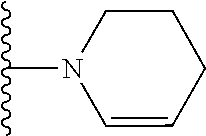
C00025

C00026
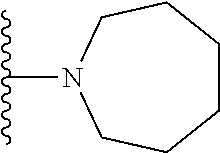
C00027

C00028

C00029

C00030

C00031

C00032

C00033

C00034

C00035

C00036

C00037

C00038
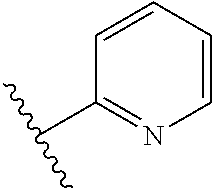
C00039

C00040

C00041

C00042

C00043

C00044

C00045

C00046

C00047

C00048
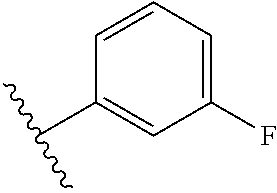
C00049

C00050

C00051

C00052

C00053
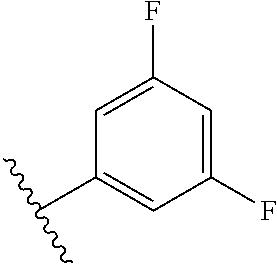
C00054
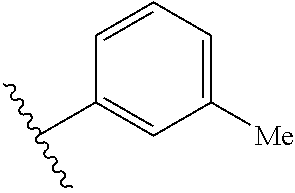
C00055

C00056

C00057
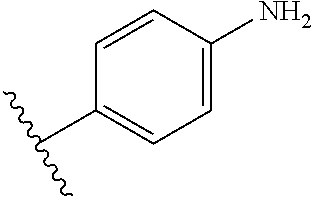
C00058
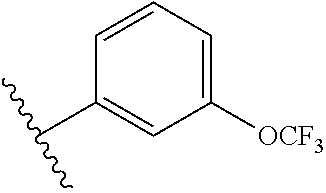
C00059

C00060

C00061

C00062

C00063

C00064

C00065

C00066

C00067

C00068
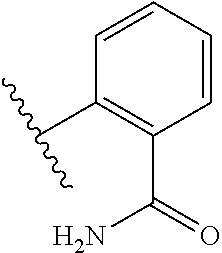
C00069

C00070

C00071
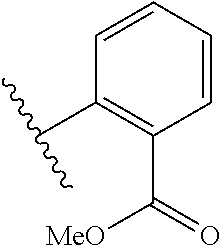
C00072

C00073

C00074
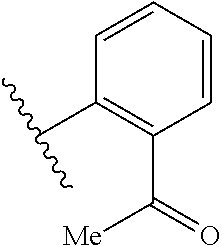
C00075

C00076

C00077

C00078
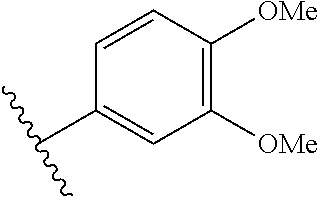
C00079

C00080

C00081

C00082

C00083

C00084

C00085

C00086

C00087

C00088

C00089

C00090
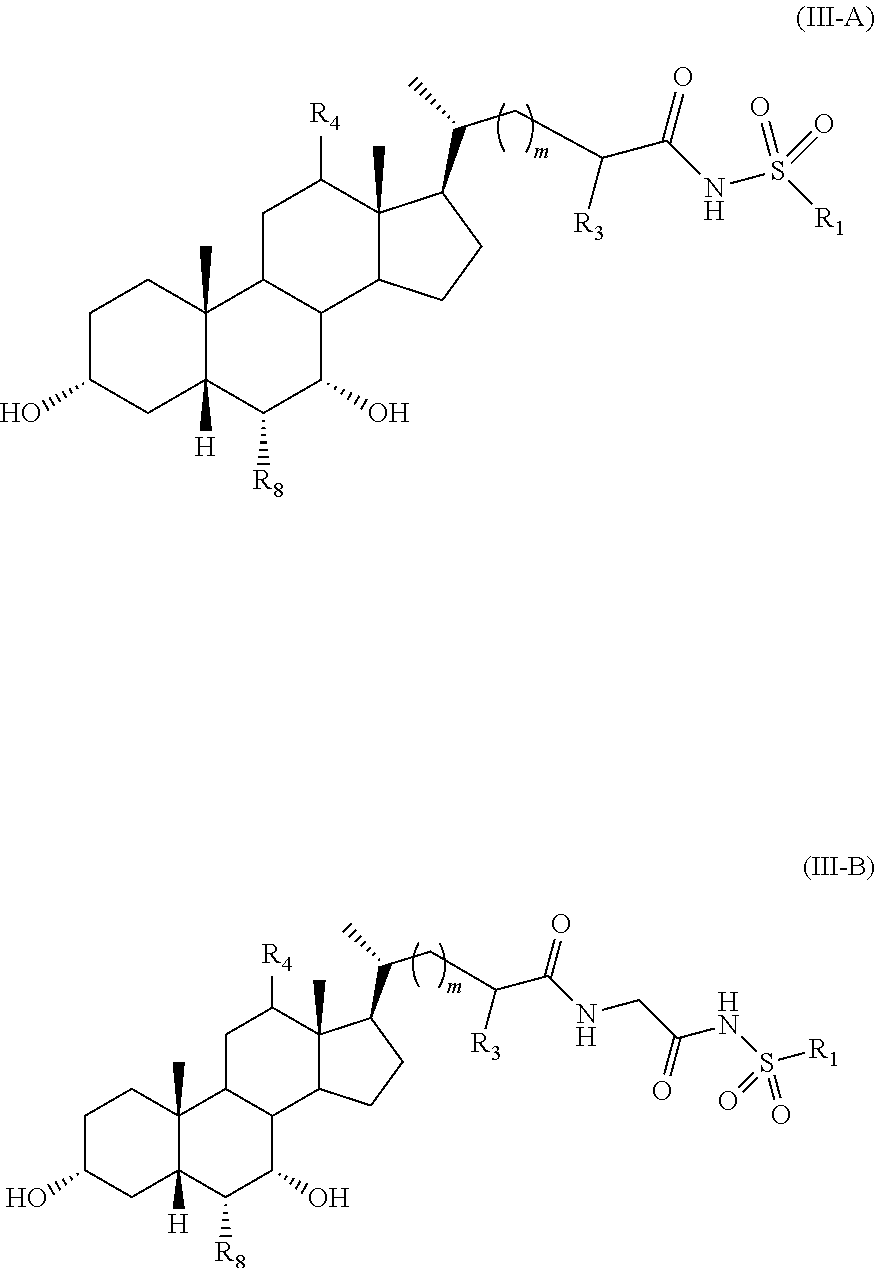
C00091

C00092

C00093

C00094

C00095

C00096

C00097

C00098

C00099

C00100

C00101

C00102

C00103

C00104

C00105

C00106

C00107

C00108

C00109

C00110

C00111

C00112

C00113
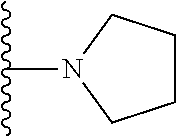
C00114

C00115
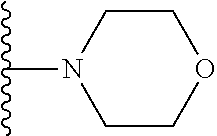
C00116

C00117

C00118

C00119

C00120

C00121
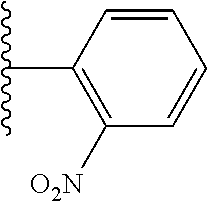
C00122

C00123

C00124

C00125

C00126

C00127

C00128

C00129

C00130
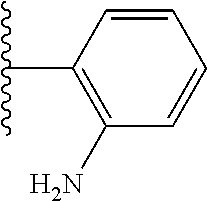
C00131

C00132

C00133

C00134

C00135

C00136

C00137

C00138

C00139
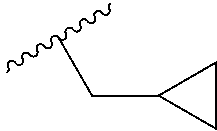
C00140

C00141

C00142
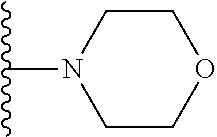
C00143

C00144

C00145

C00146

C00147

C00148
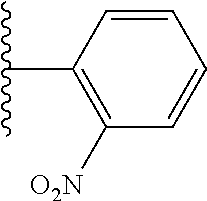
C00149
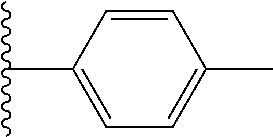
C00150

C00151

C00152
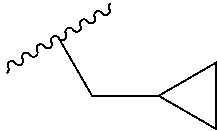
C00153

C00154

C00155

C00156

C00157

C00158

C00159

C00160

C00161

C00162

C00163
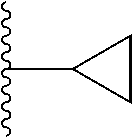
C00164

C00165

C00166
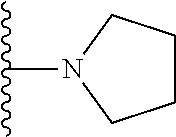
C00167

C00168

C00169

C00170

C00171
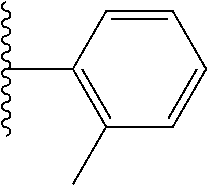
C00172

C00173

C00174
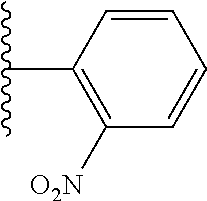
C00175
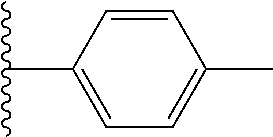
C00176
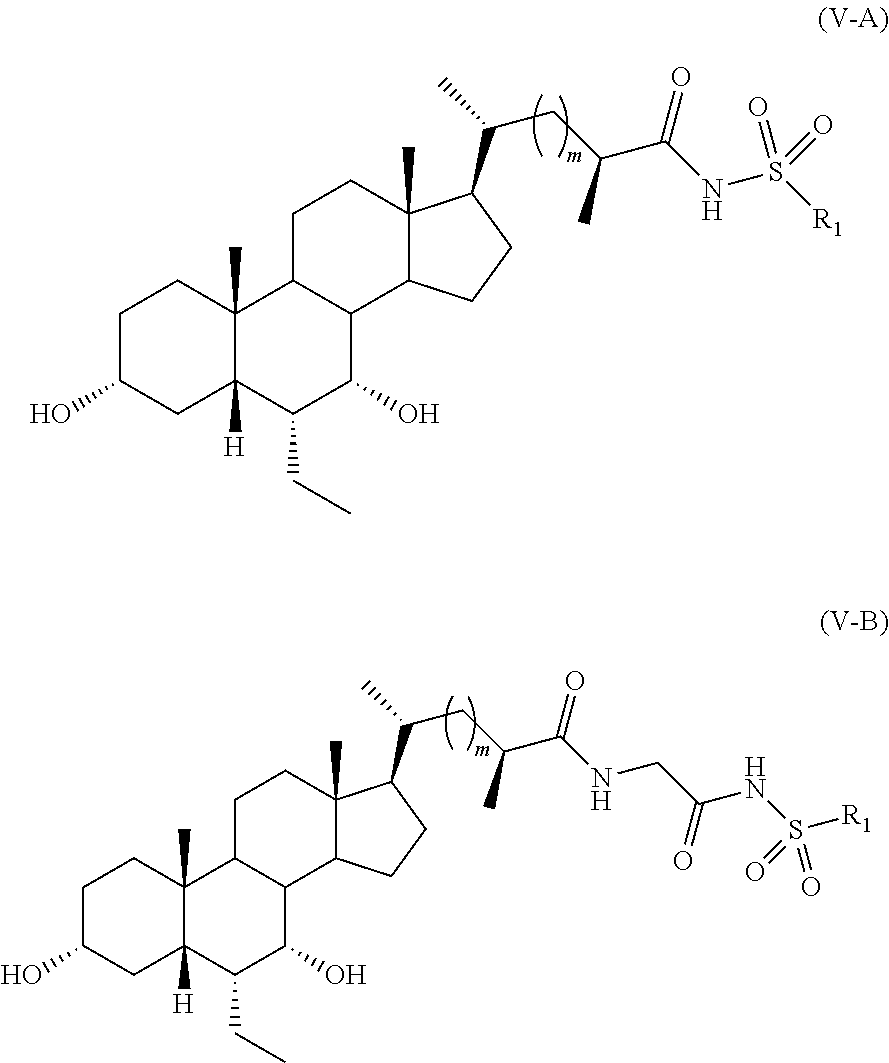
C00177

C00178

C00179

C00180

C00181

C00182
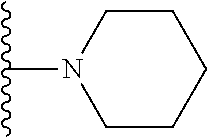
C00183

C00184

C00185

C00186

C00187

C00188

C00189
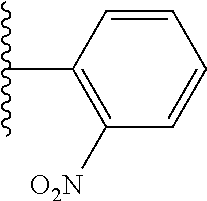
C00190

C00191
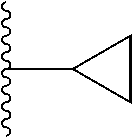
C00192

C00193

C00194

C00195
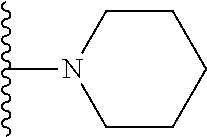
C00196

C00197

C00198

C00199

C00200
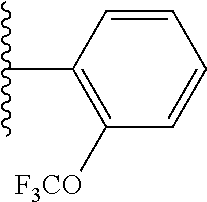
C00201

C00202

C00203
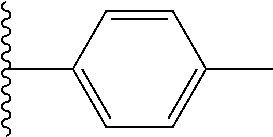
C00204
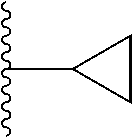
C00205

C00206
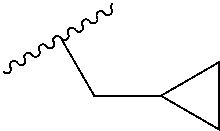
C00207

C00208

C00209

C00210
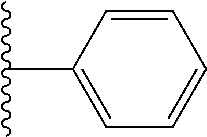
C00211

C00212

C00213

C00214

C00215

C00216

C00217
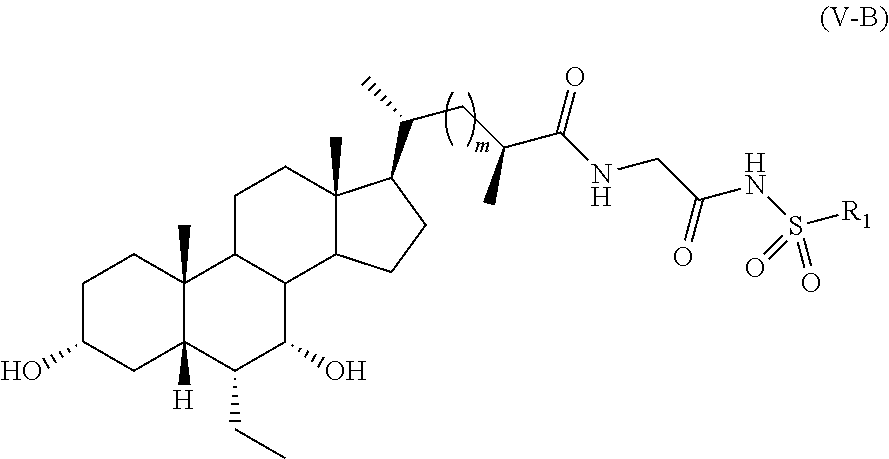
C00218
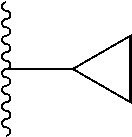
C00219
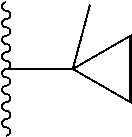
C00220

C00221

C00222

C00223

C00224
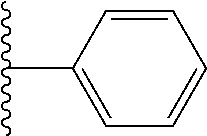
C00225

C00226

C00227

C00228

C00229

C00230

C00231

C00232
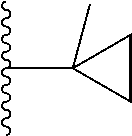
C00233

C00234
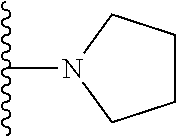
C00235

C00236
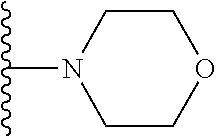
C00237

C00238

C00239

C00240

C00241

C00242

C00243

C00244

C00245

C00246
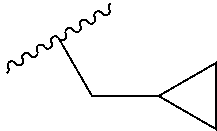
C00247

C00248

C00249

C00250
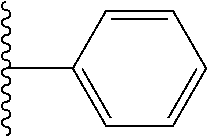
C00251

C00252

C00253

C00254

C00255

C00256

C00257

C00258
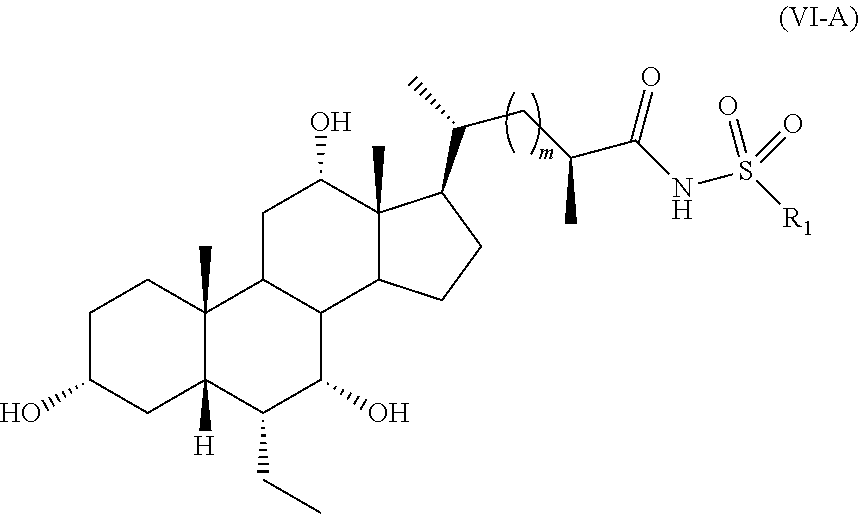
C00259

C00260

C00261

C00262

C00263

C00264

C00265

C00266

C00267

C00268

C00269

C00270
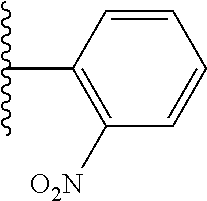
C00271
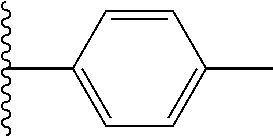
C00272

C00273

C00274
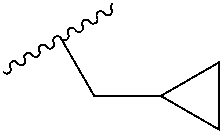
C00275

C00276

C00277

C00278

C00279
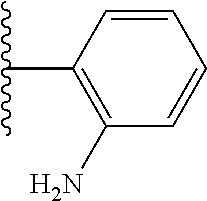
C00280

C00281

C00282

C00283
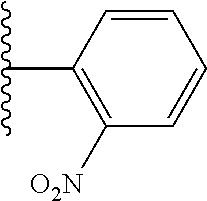
C00284

C00285

C00286
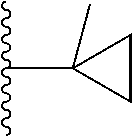
C00287

C00288
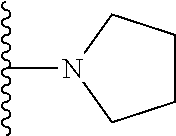
C00289

C00290

C00291

C00292

C00293
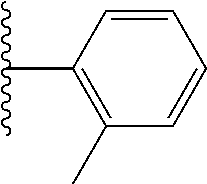
C00294

C00295

C00296

C00297

C00298

C00299

C00300

C00301

C00302

C00303

C00304
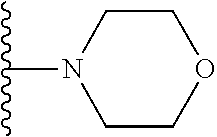
C00305

C00306

C00307
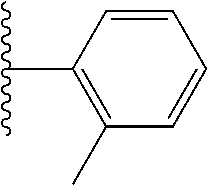
C00308

C00309
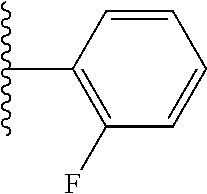
C00310

C00311

C00312

C00313

C00314
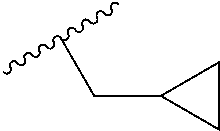
C00315

C00316

C00317
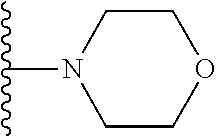
C00318

C00319

C00320

C00321

C00322

C00323

C00324

C00325

C00326

C00327

C00328

C00329

C00330

C00331
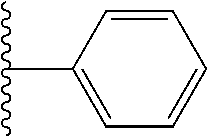
C00332

C00333

C00334
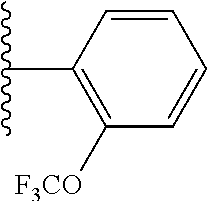
C00335

C00336

C00337

C00338

C00339
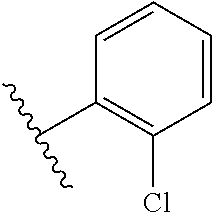
C00340

C00341

C00342

C00343

C00344

C00345
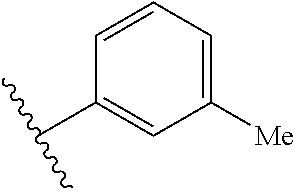
C00346
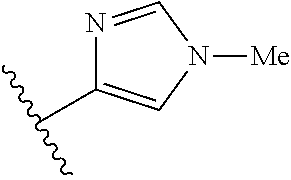
C00347
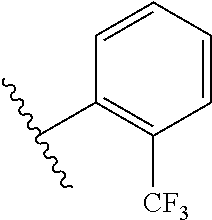
C00348

C00349

C00350

C00351
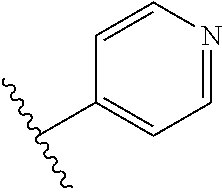
C00352

C00353
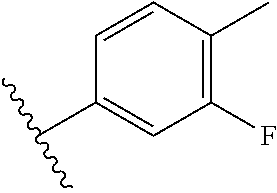
C00354

C00355

C00356

C00357

C00358

C00359

C00360

C00361

C00362

C00363
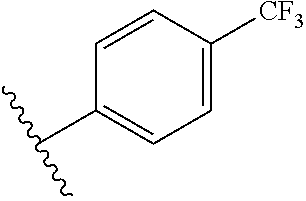
C00364

C00365

C00366

C00367

C00368

C00369

C00370

C00371
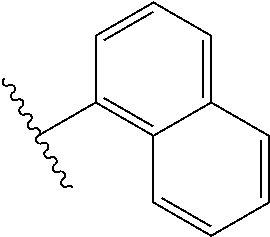
C00372

C00373

C00374

C00375

C00376
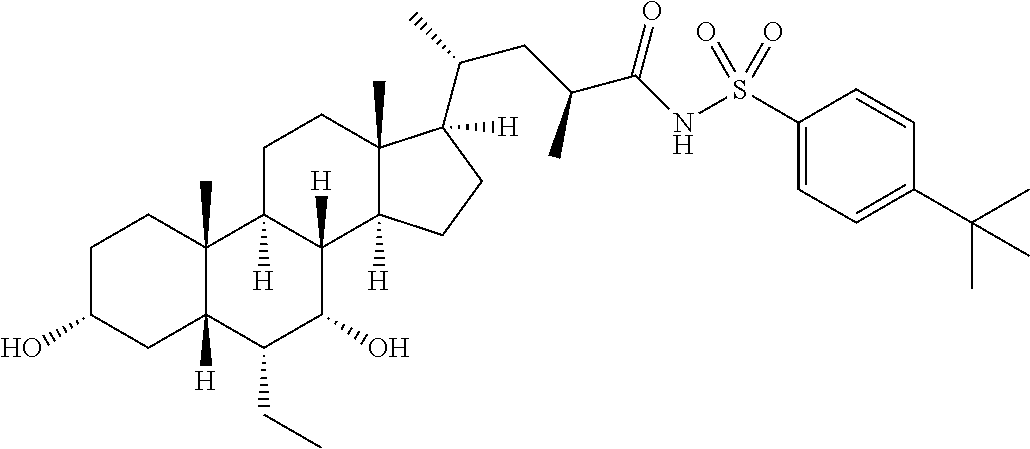
C00377

C00378

C00379
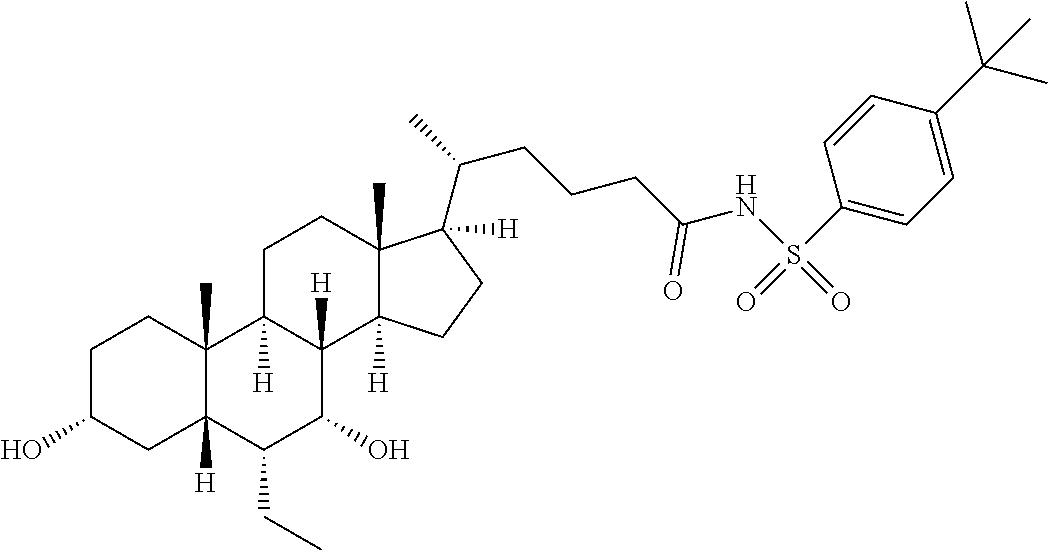
C00380

C00381
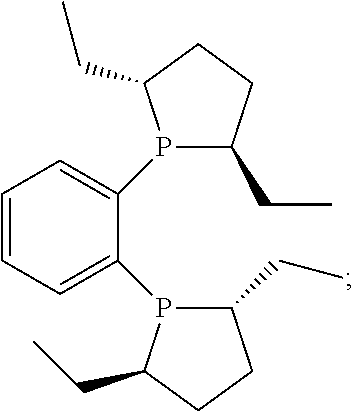
C00382
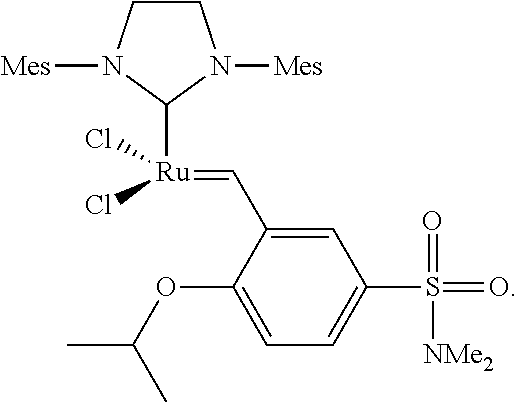
C00383

C00384

C00385

C00386

C00387
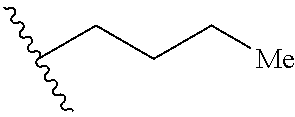
C00388

C00389

C00390

C00391

C00392

C00393

C00394
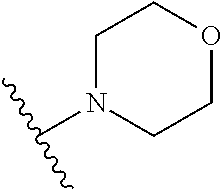
C00395

C00396

C00397

C00398

C00399
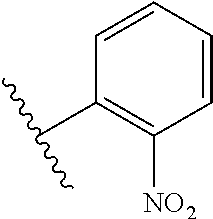
C00400
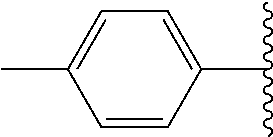
C00401

C00402

C00403

C00404

C00405

C00406

C00407

C00408

C00409

C00410

C00411

C00412

C00413

C00414

C00415
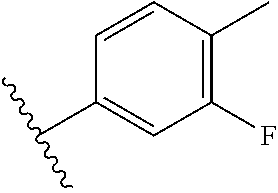
C00416

C00417

C00418

C00419

C00420

C00421

C00422

C00423

C00424

C00425

C00426

C00427

C00428

C00429

C00430
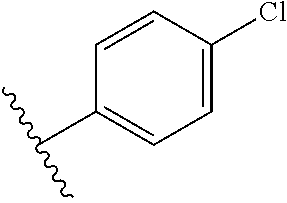
C00431

C00432

C00433

C00434

C00435

C00436

C00437

C00438

C00439

C00440

C00441
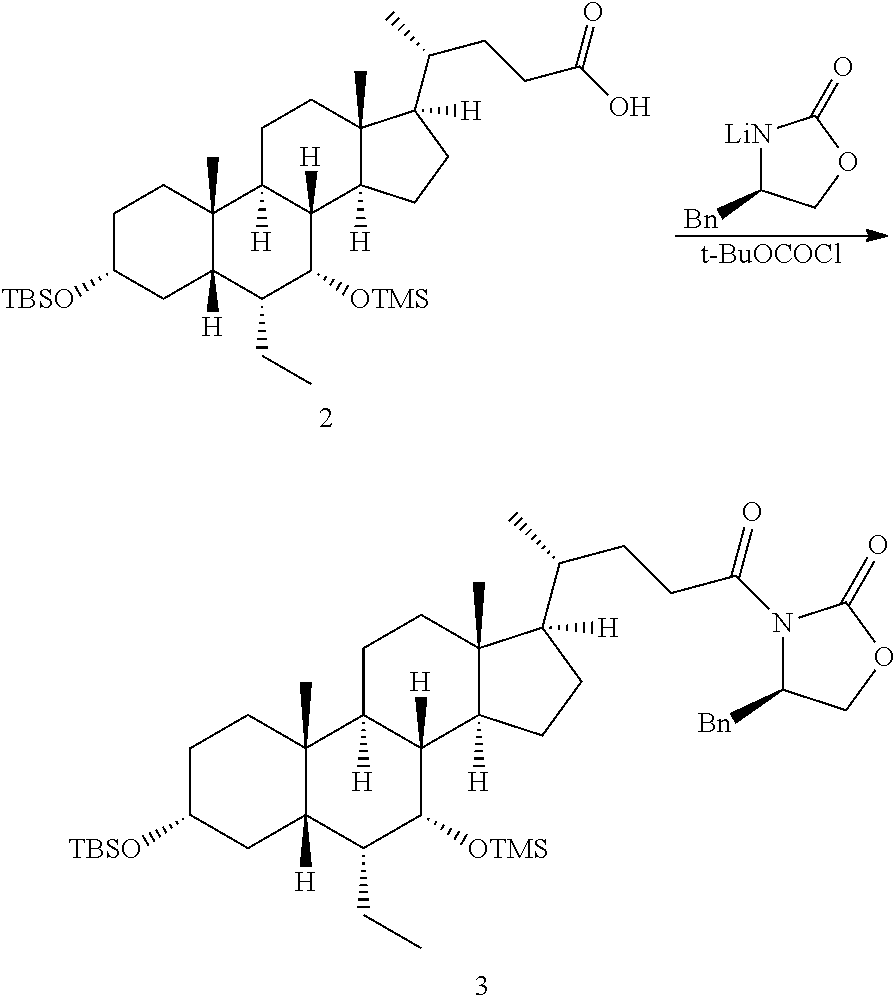
C00442

C00443
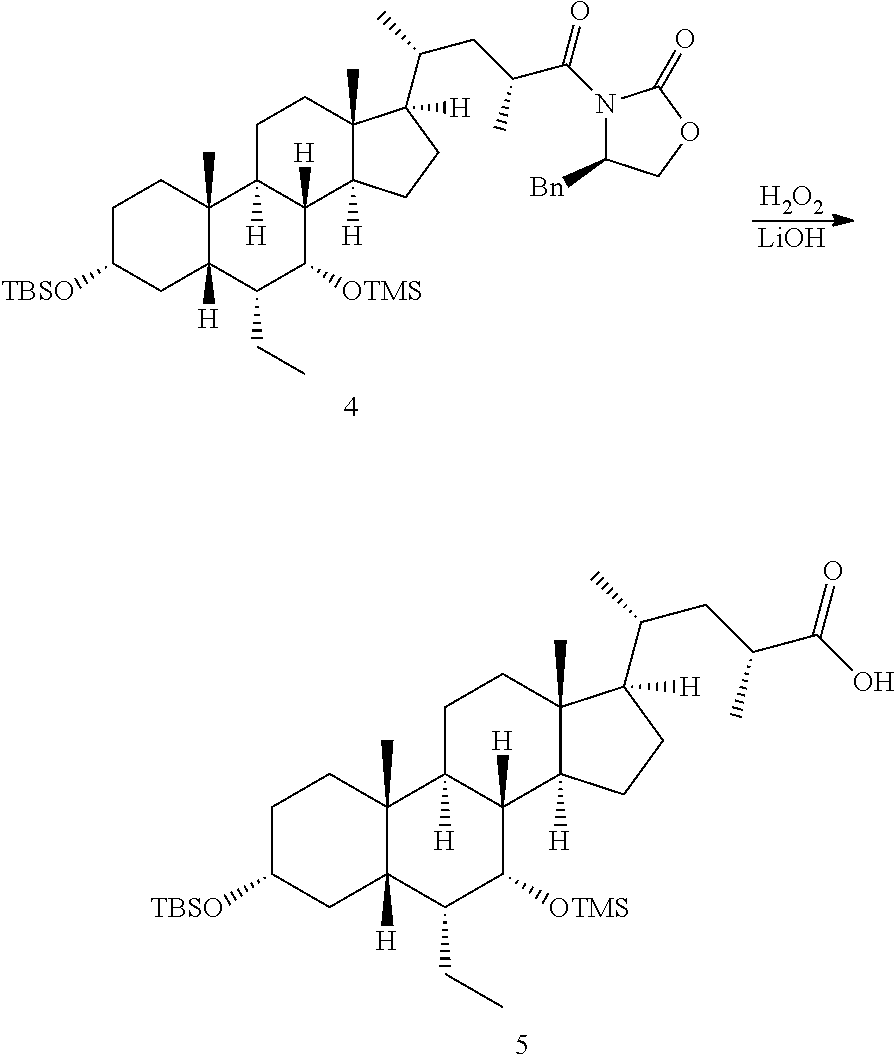
C00444
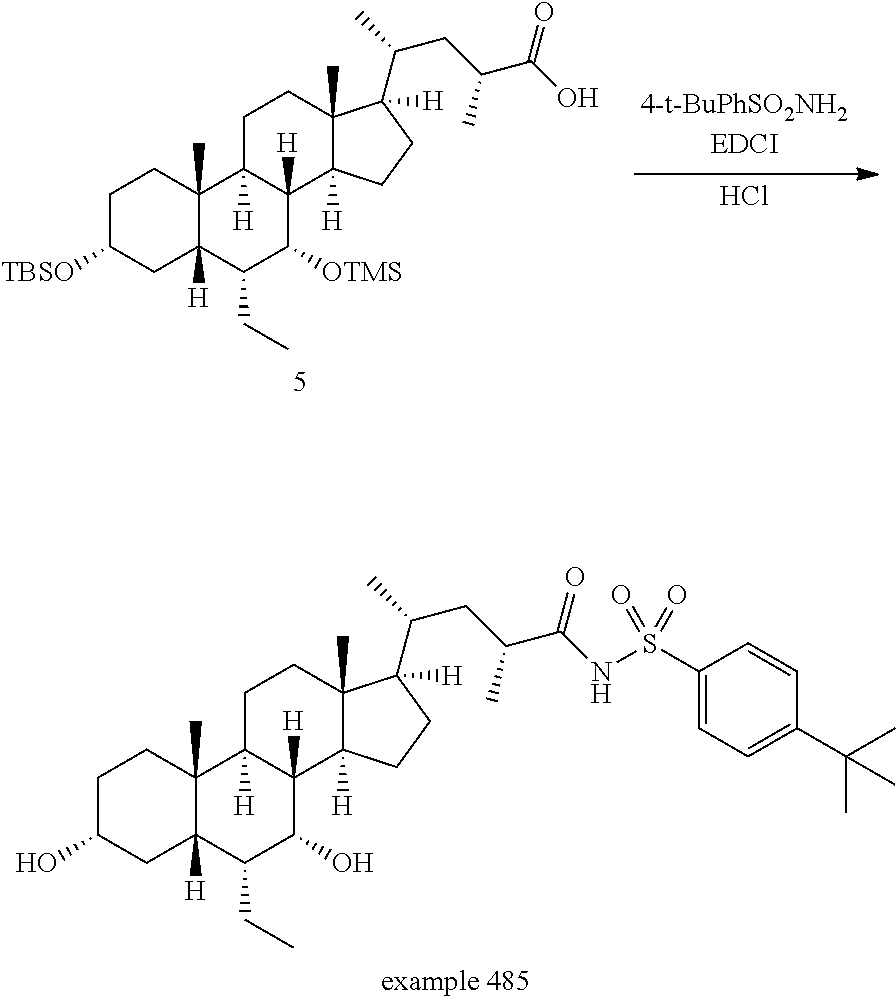
C00445

C00446
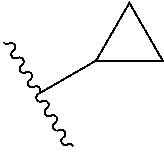
C00447

C00448

C00449

C00450

C00451

C00452

C00453

C00454

C00455
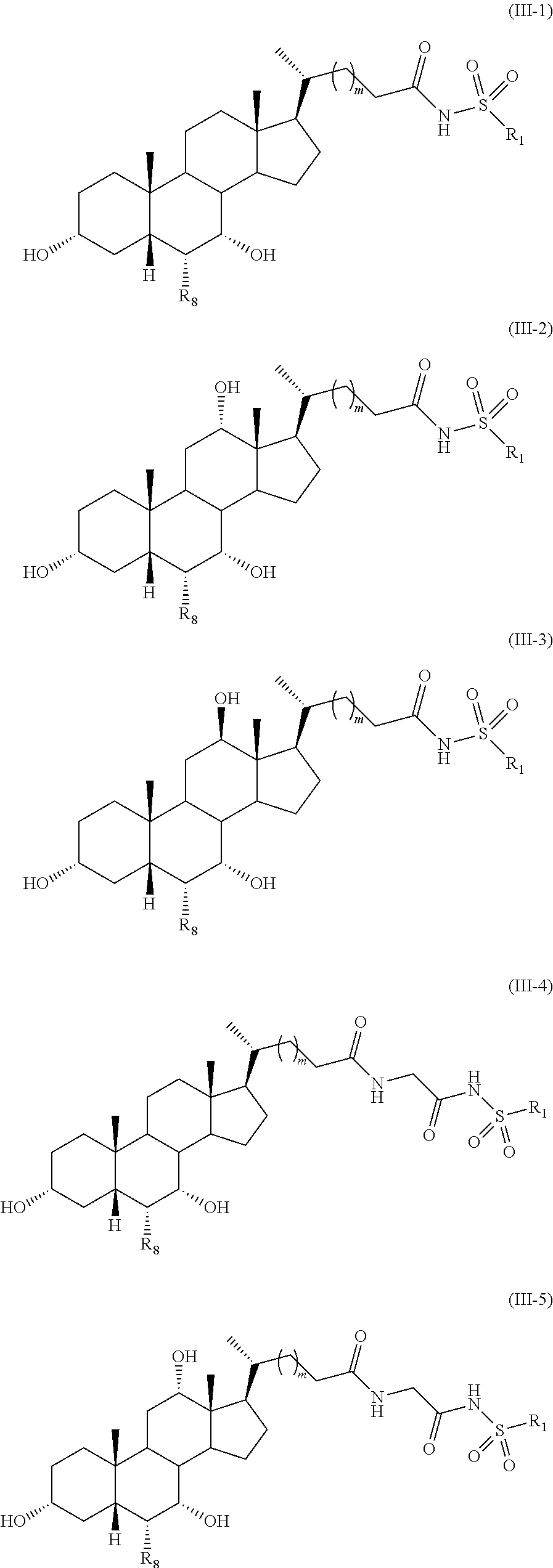
C00456

C00457

C00458

C00459

C00460

C00461

C00462

C00463

C00464

C00465

C00466

C00467

C00468

C00469

C00470

C00471

C00472

C00473
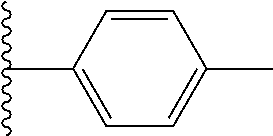
C00474
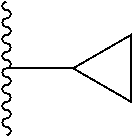
C00475

C00476

C00477

C00478

C00479

C00480

C00481

C00482

C00483

C00484
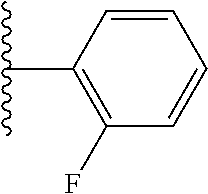
C00485

C00486

C00487
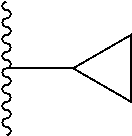
C00488
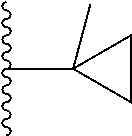
C00489

C00490

C00491

C00492

C00493

C00494
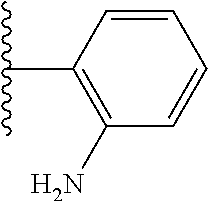
C00495
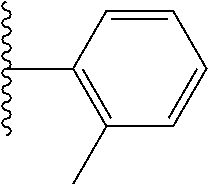
C00496
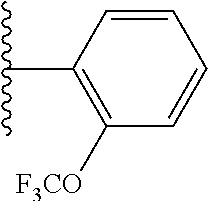
C00497

C00498

C00499

C00500

C00501

C00502

C00503

C00504

C00505
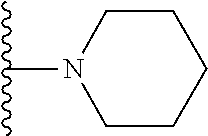
C00506

C00507

C00508

C00509
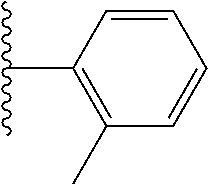
C00510

C00511
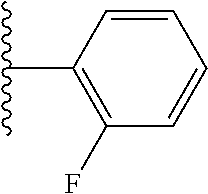
C00512

C00513

C00514

C00515

C00516

C00517

C00518

C00519

C00520

C00521

C00522

C00523

C00524
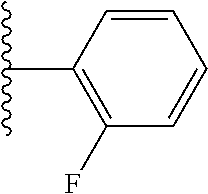
C00525

C00526
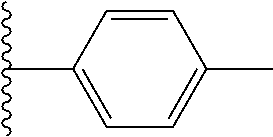
C00527

C00528
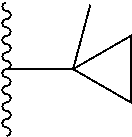
C00529

C00530

C00531

C00532
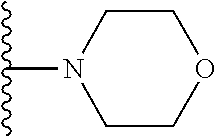
C00533

C00534

C00535

C00536

C00537

C00538

C00539

C00540
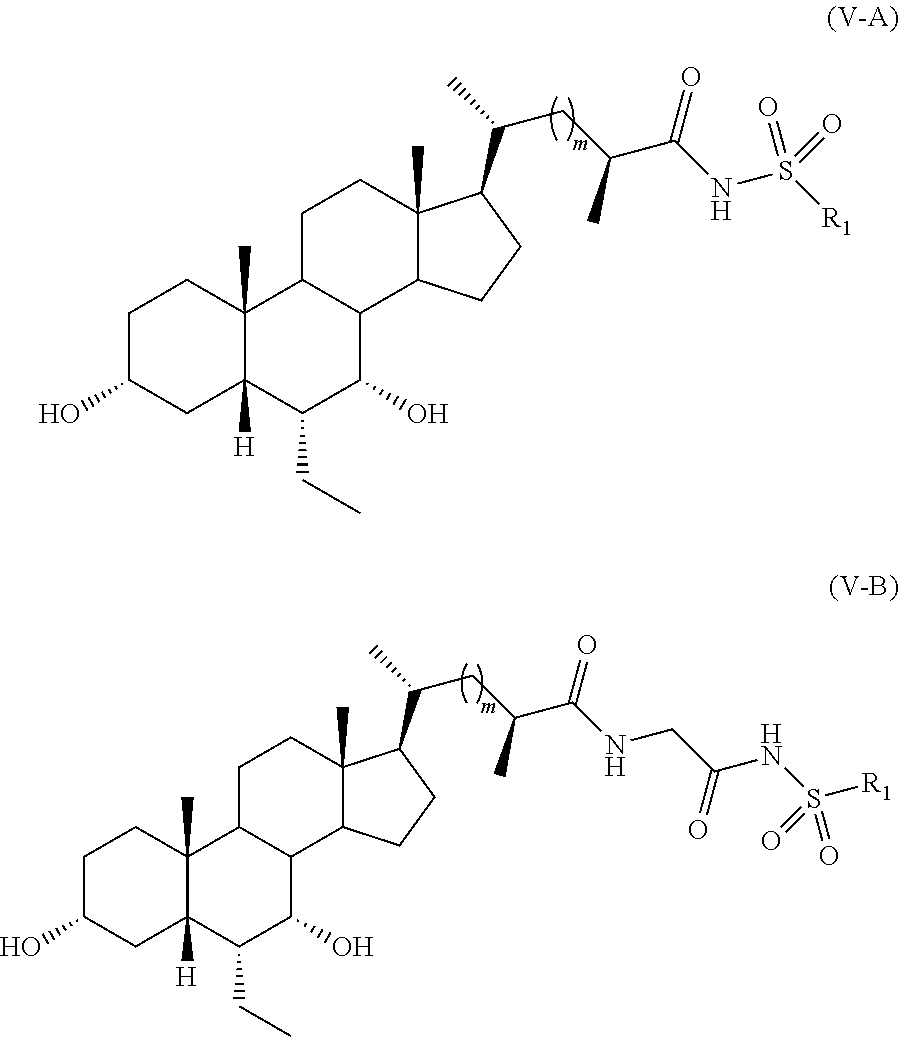
C00541

C00542

C00543

C00544

C00545

C00546

C00547

C00548

C00549

C00550

C00551

C00552

C00553

C00554

C00555

C00556

C00557

C00558
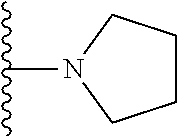
C00559

C00560

C00561

C00562

C00563

C00564

C00565

C00566

C00567

C00568

C00569

C00570
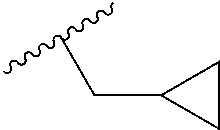
C00571

C00572

C00573

C00574

C00575

C00576

C00577

C00578

C00579

C00580

C00581

C00582

C00583

C00584

C00585

C00586

C00587

C00588

C00589

C00590

C00591
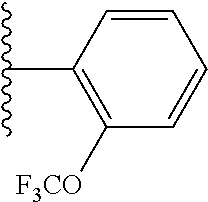
C00592

C00593

C00594

C00595

C00596

C00597

C00598

C00599

C00600

C00601
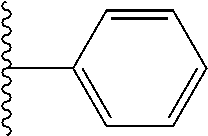
C00602

C00603
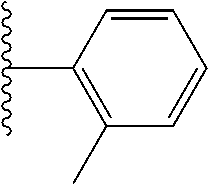
C00604

C00605

C00606

C00607

C00608

C00609

C00610

C00611

C00612

C00613

C00614

C00615
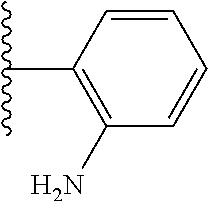
C00616

C00617

C00618

C00619

C00620

C00621

C00622

C00623

C00624

C00625

C00626

C00627

C00628

C00629
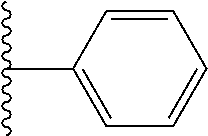
C00630

C00631
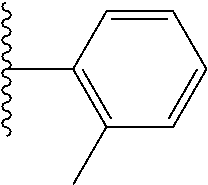
C00632

C00633

C00634

C00635

C00636
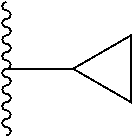
C00637

C00638

C00639

C00640

C00641

C00642

C00643

C00644
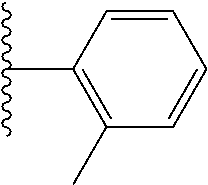
C00645

C00646

C00647

C00648

C00649

C00650
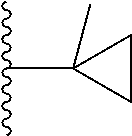
C00651
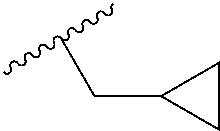
C00652

C00653

C00654

C00655

C00656

C00657

C00658

C00659

C00660

C00661

C00662

C00663

C00664

C00665

C00666

C00667

C00668

C00669

C00670

C00671
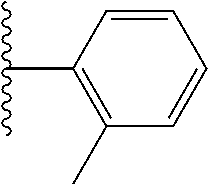
C00672

C00673

C00674
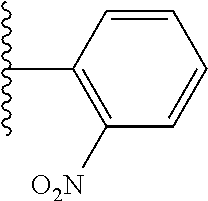
C00675

C00676

C00677

C00678
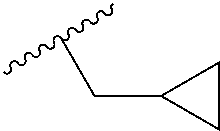
C00679

C00680
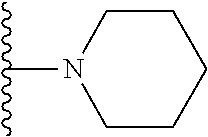
C00681
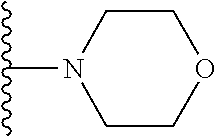
C00682

C00683

C00684

C00685

C00686

C00687

C00688
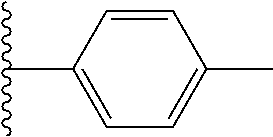
C00689

C00690

C00691

C00692

C00693

C00694
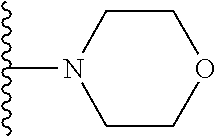
C00695

C00696

C00697

C00698

C00699

C00700

C00701

C00702

C00703

C00704
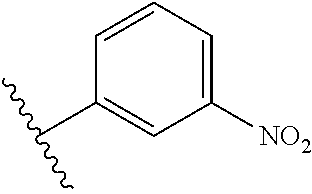
C00705

C00706

C00707

C00708
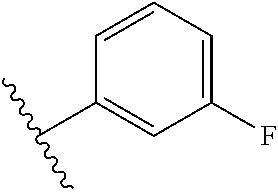
C00709

C00710

C00711

C00712

C00713

C00714

C00715

C00716

C00717

C00718

C00719

C00720

C00721

C00722

C00723

C00724

C00725

C00726

C00727

C00728

C00729

C00730

C00731

C00732

C00733

C00734

C00735

C00736

C00737

C00738

C00739
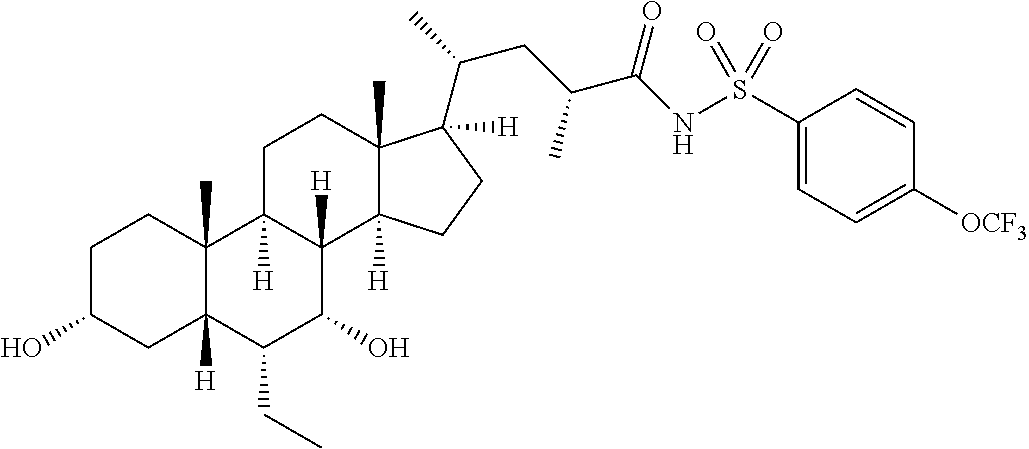
C00740

C00741

C00742

C00743

C00744

XML
uspto.report is an independent third-party trademark research tool that is not affiliated, endorsed, or sponsored by the United States Patent and Trademark Office (USPTO) or any other governmental organization. The information provided by uspto.report is based on publicly available data at the time of writing and is intended for informational purposes only.
While we strive to provide accurate and up-to-date information, we do not guarantee the accuracy, completeness, reliability, or suitability of the information displayed on this site. The use of this site is at your own risk. Any reliance you place on such information is therefore strictly at your own risk.
All official trademark data, including owner information, should be verified by visiting the official USPTO website at www.uspto.gov. This site is not intended to replace professional legal advice and should not be used as a substitute for consulting with a legal professional who is knowledgeable about trademark law.